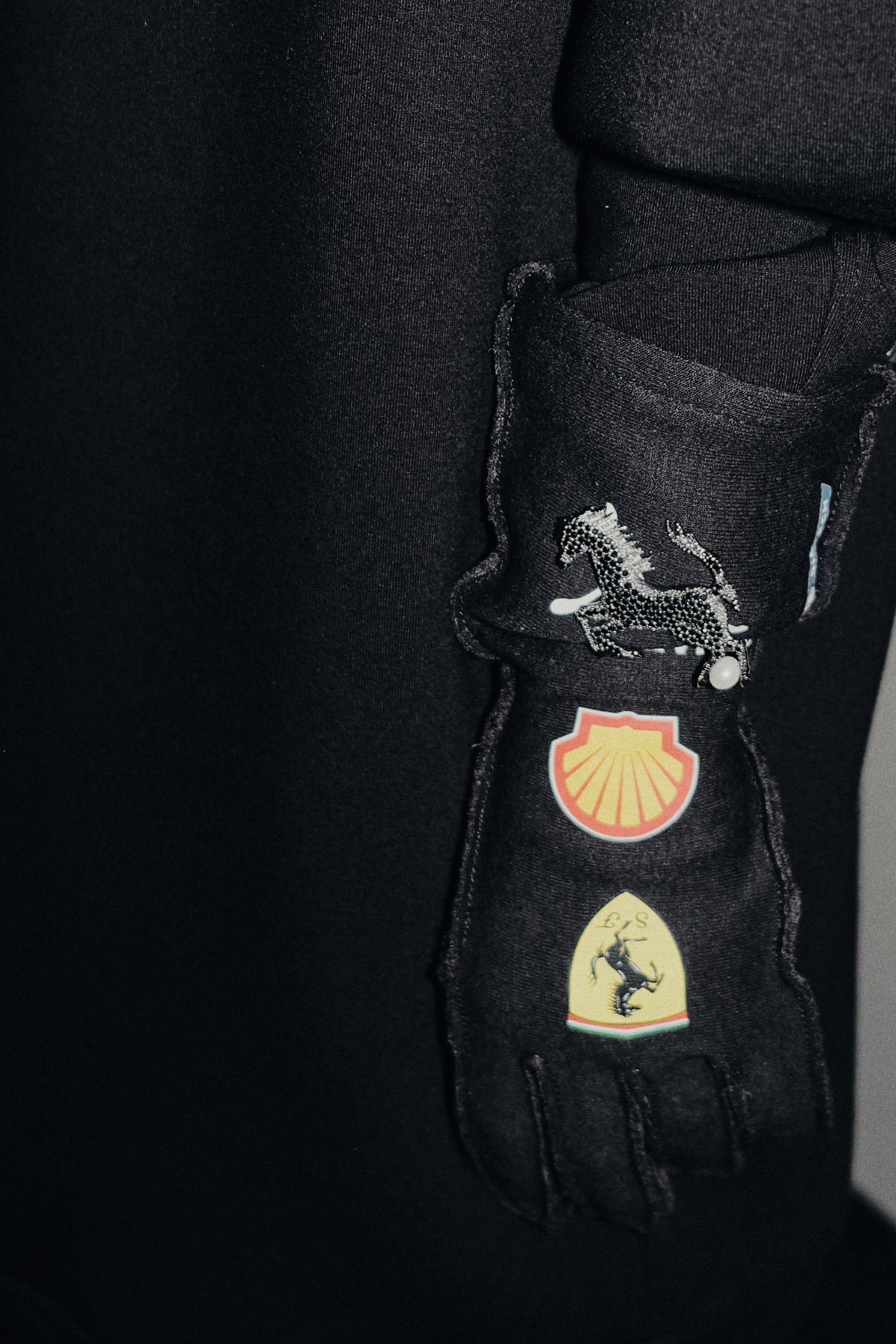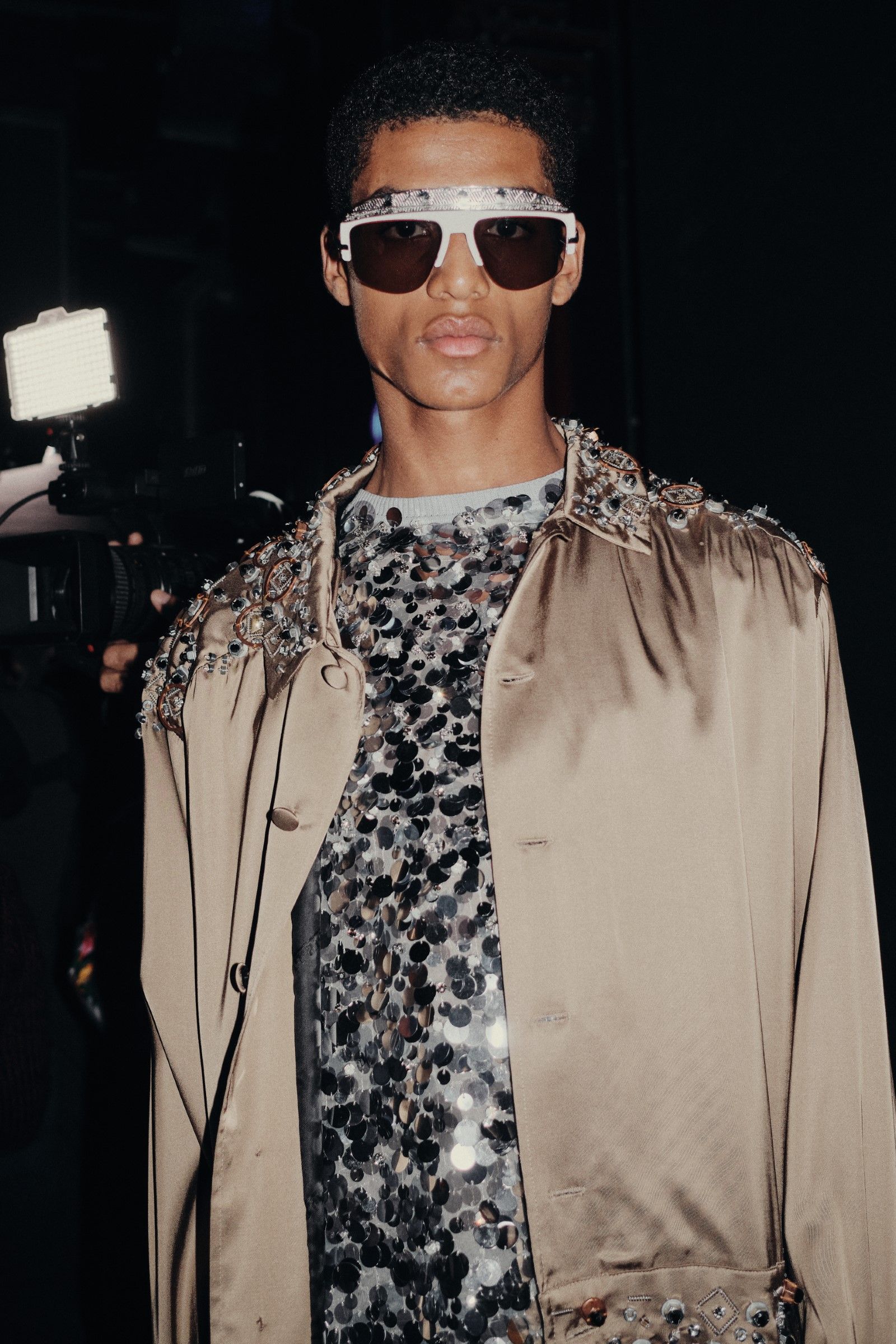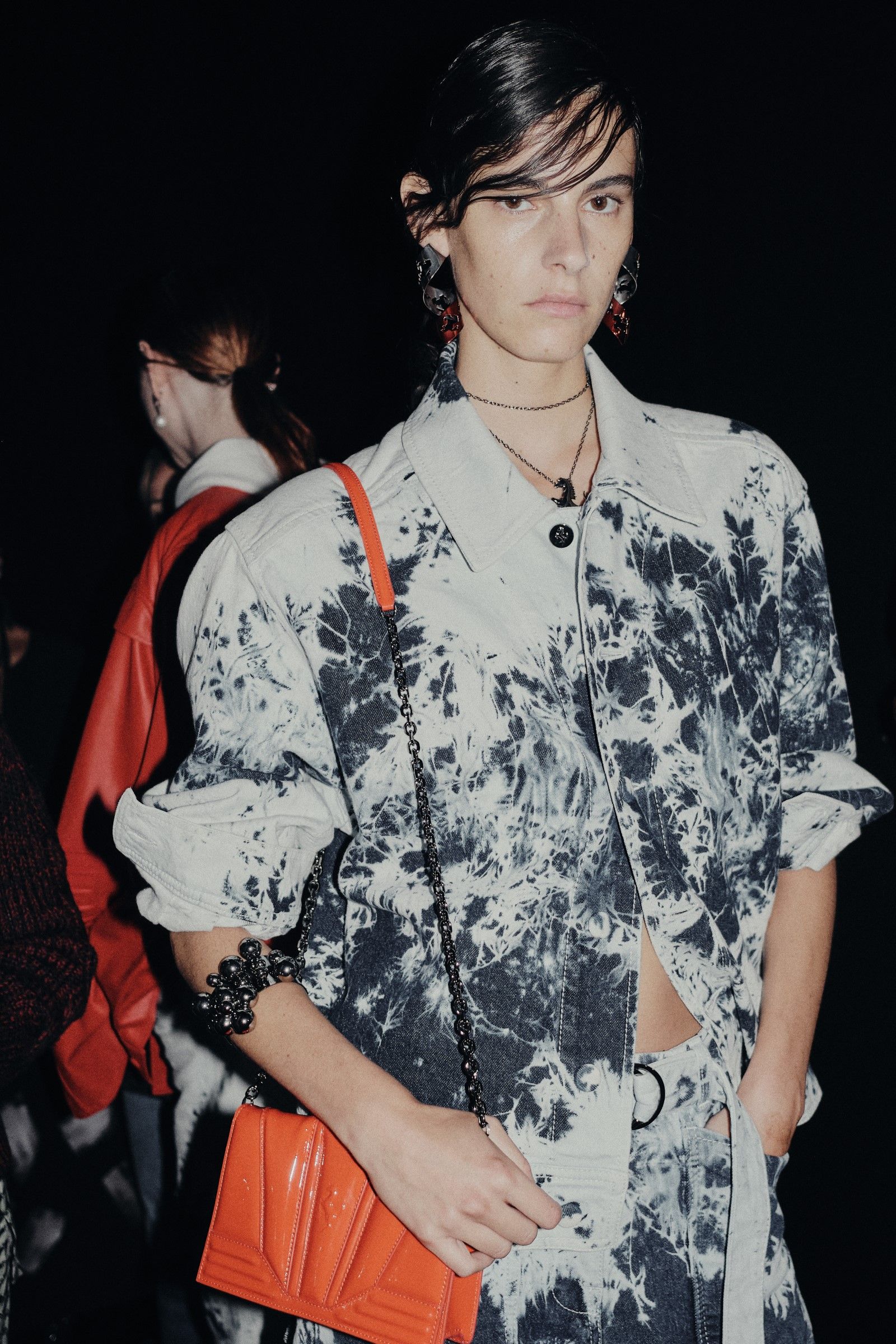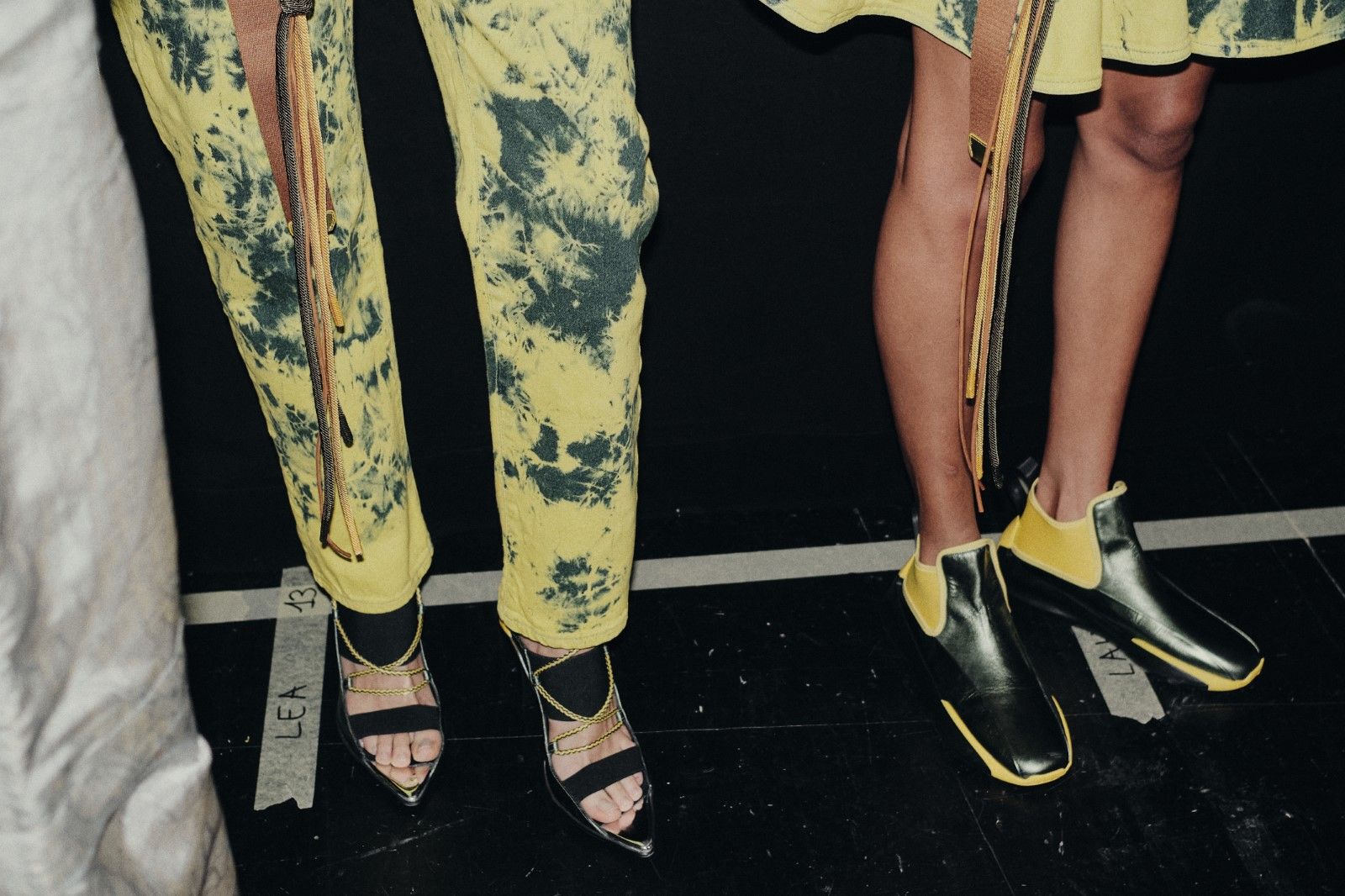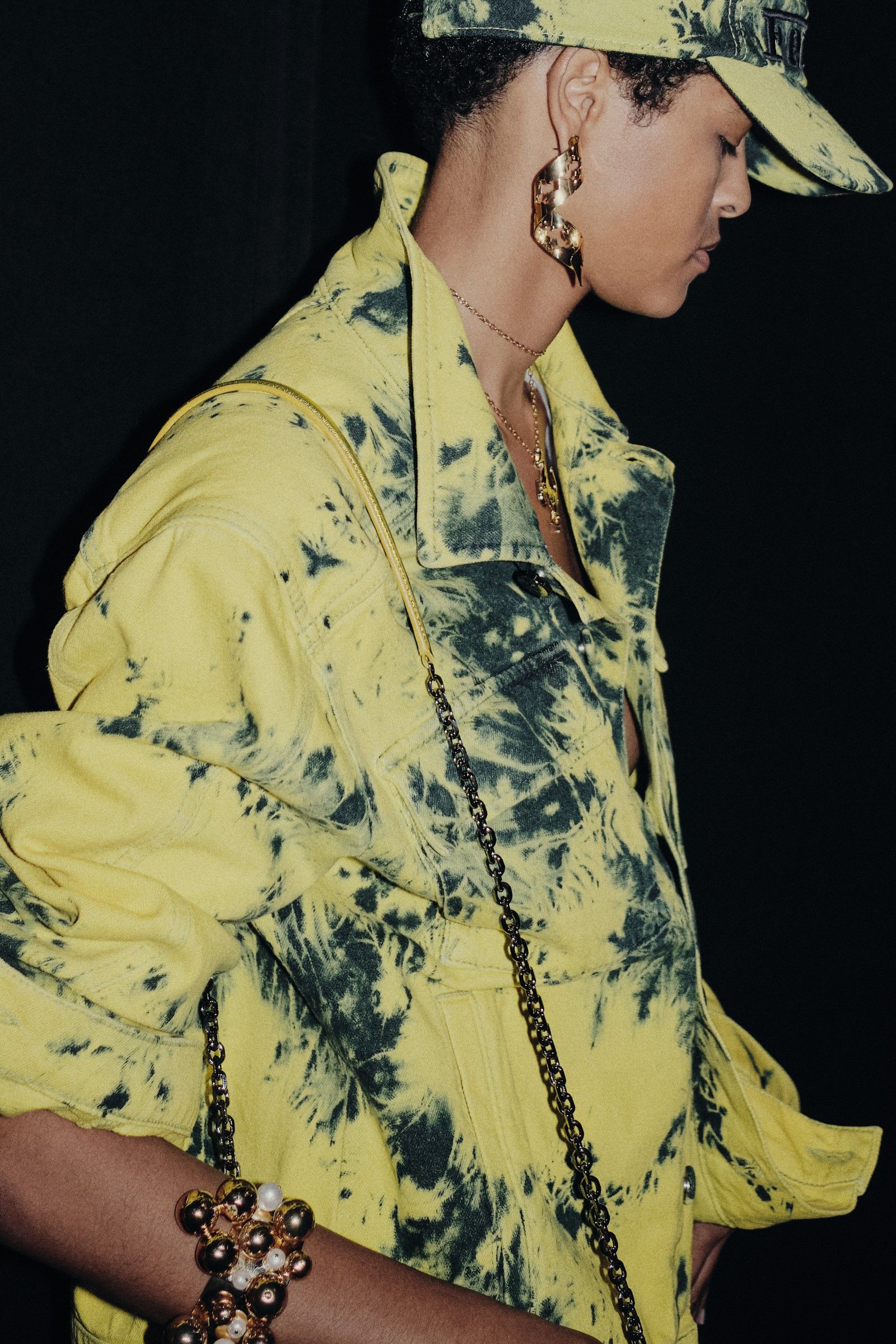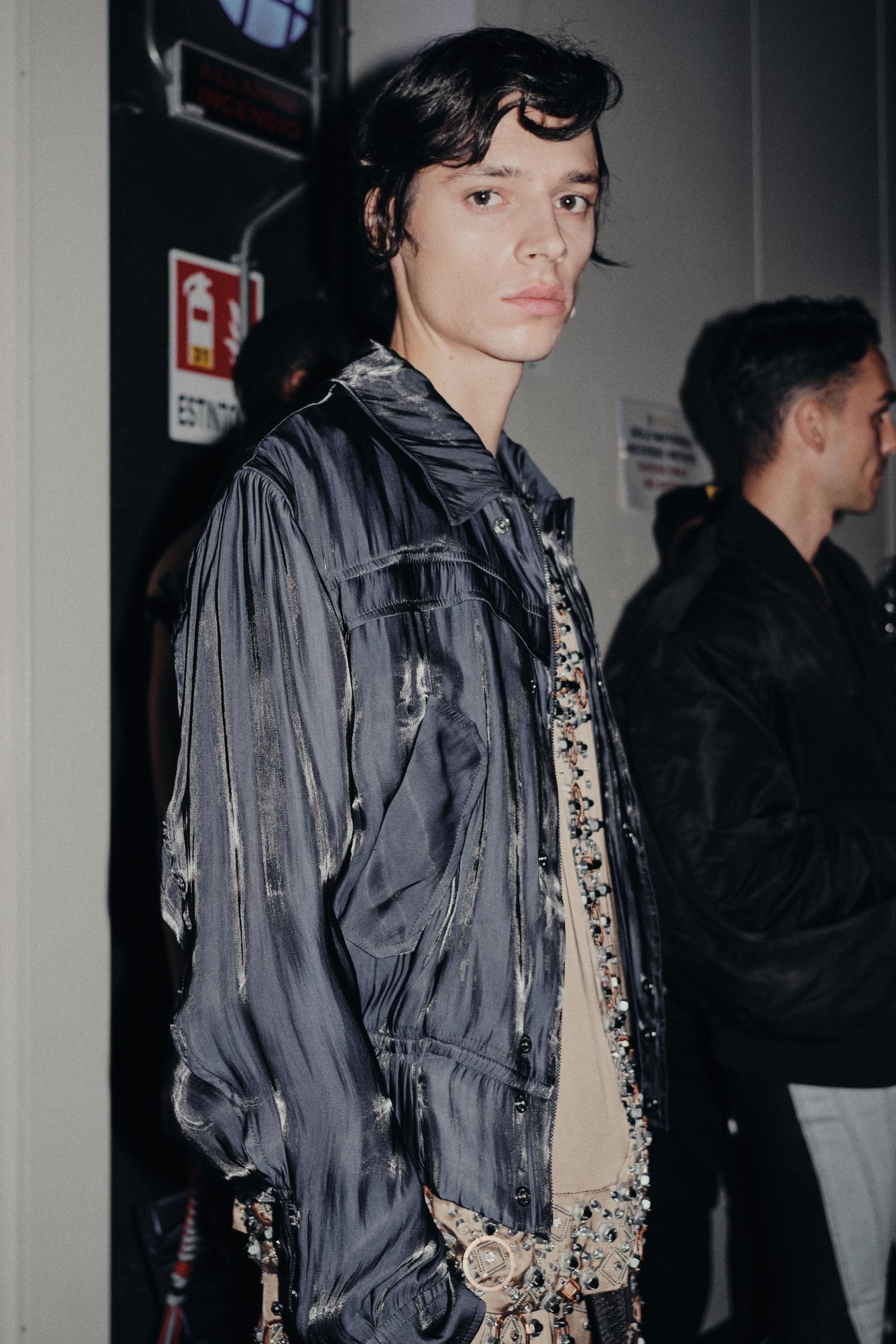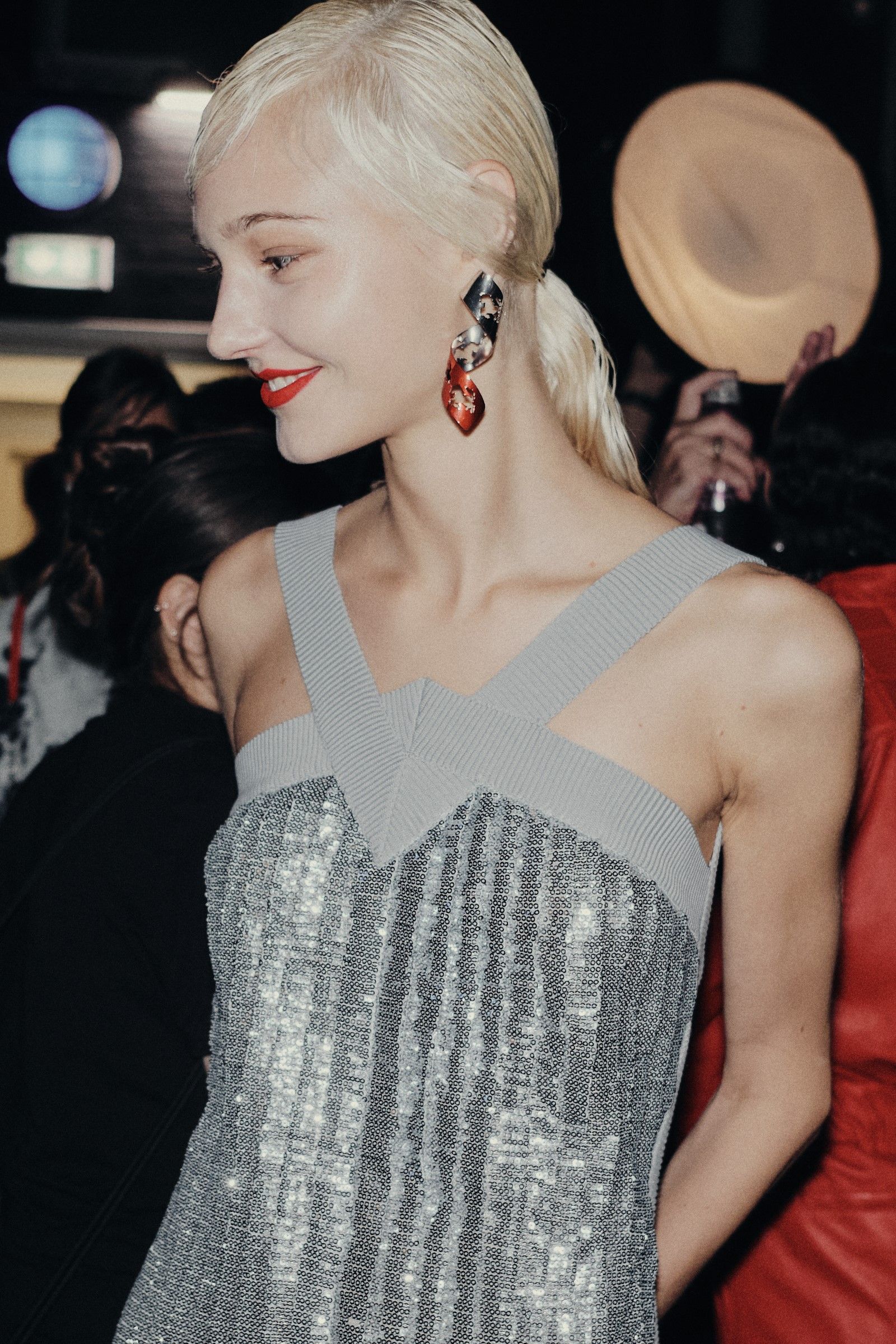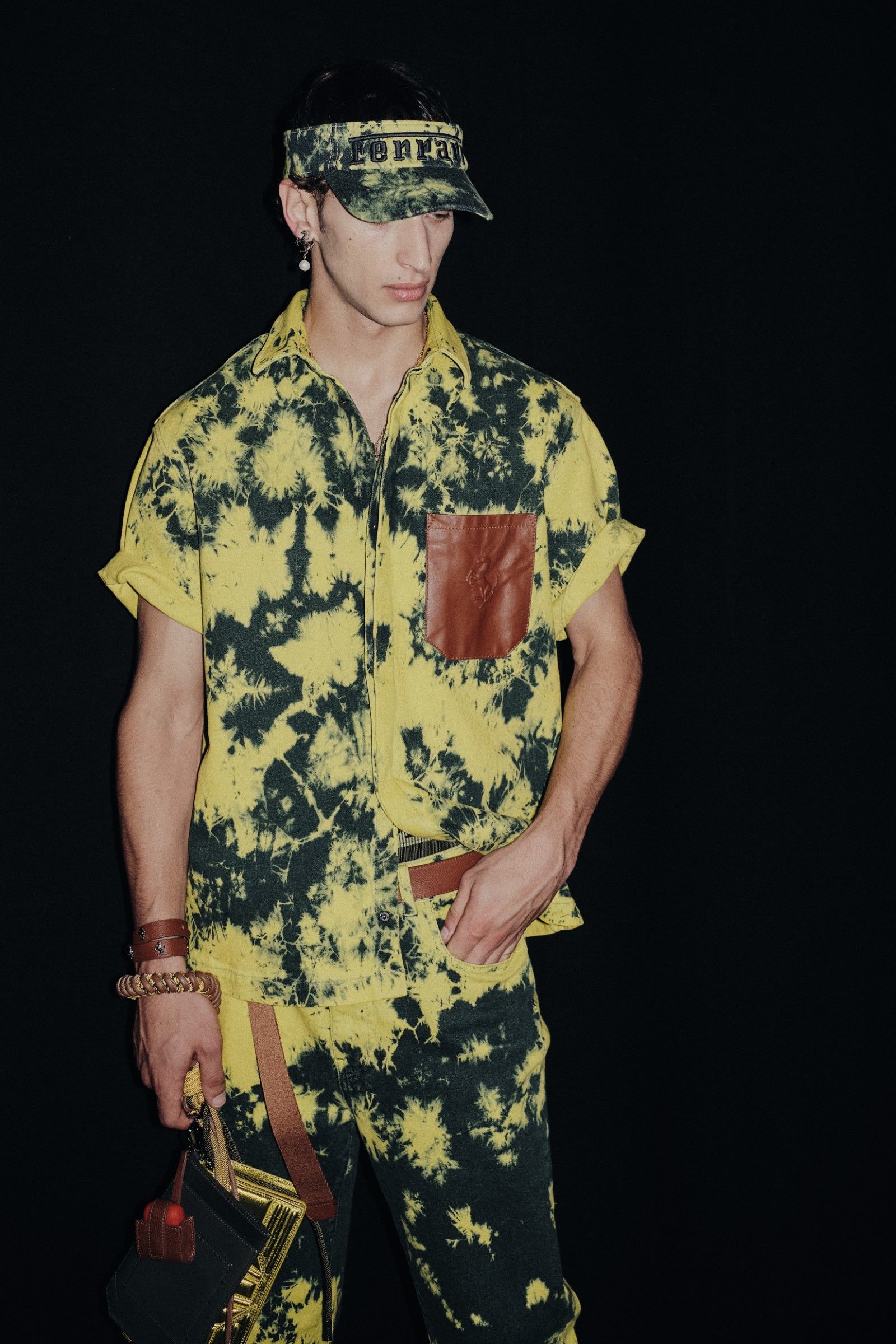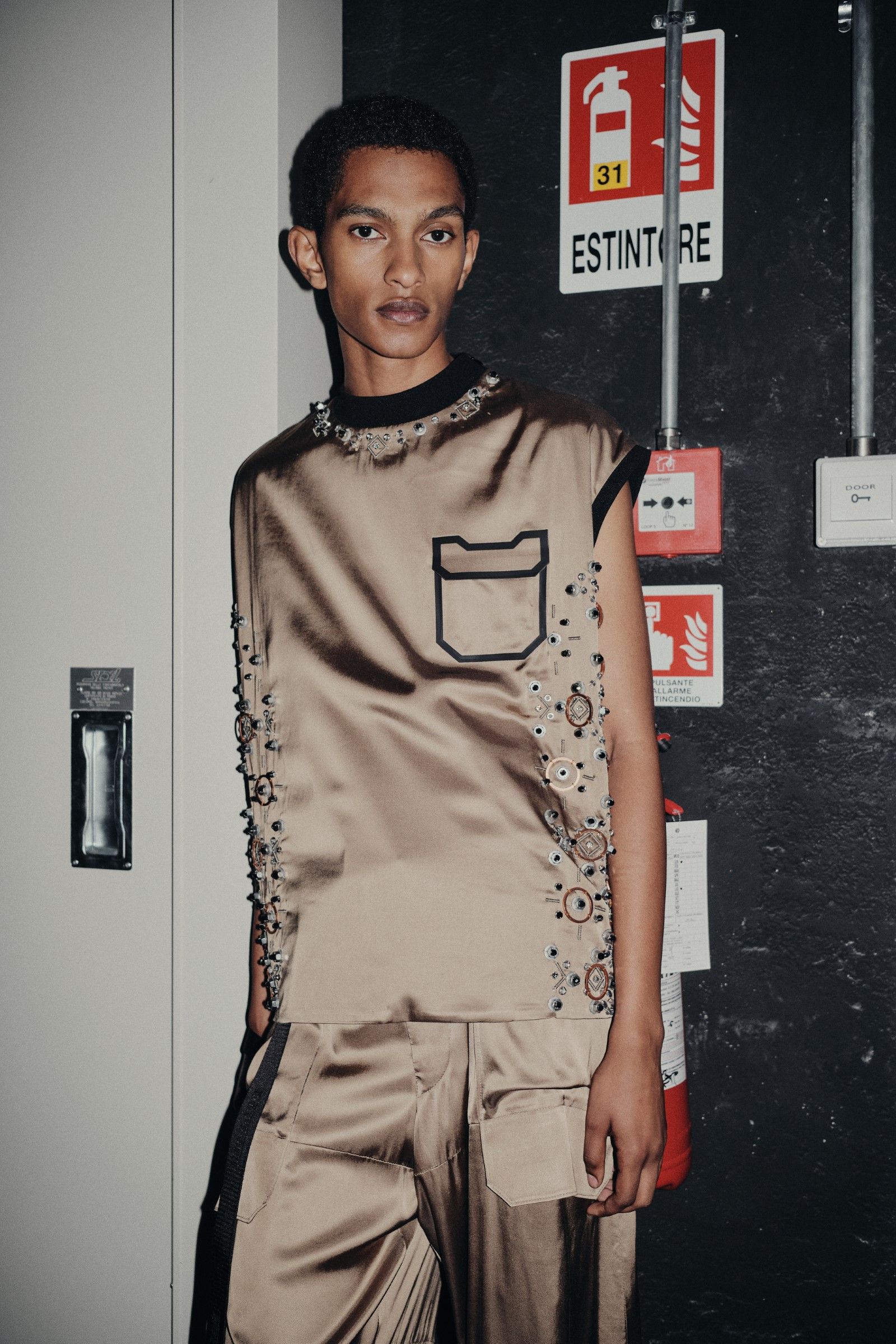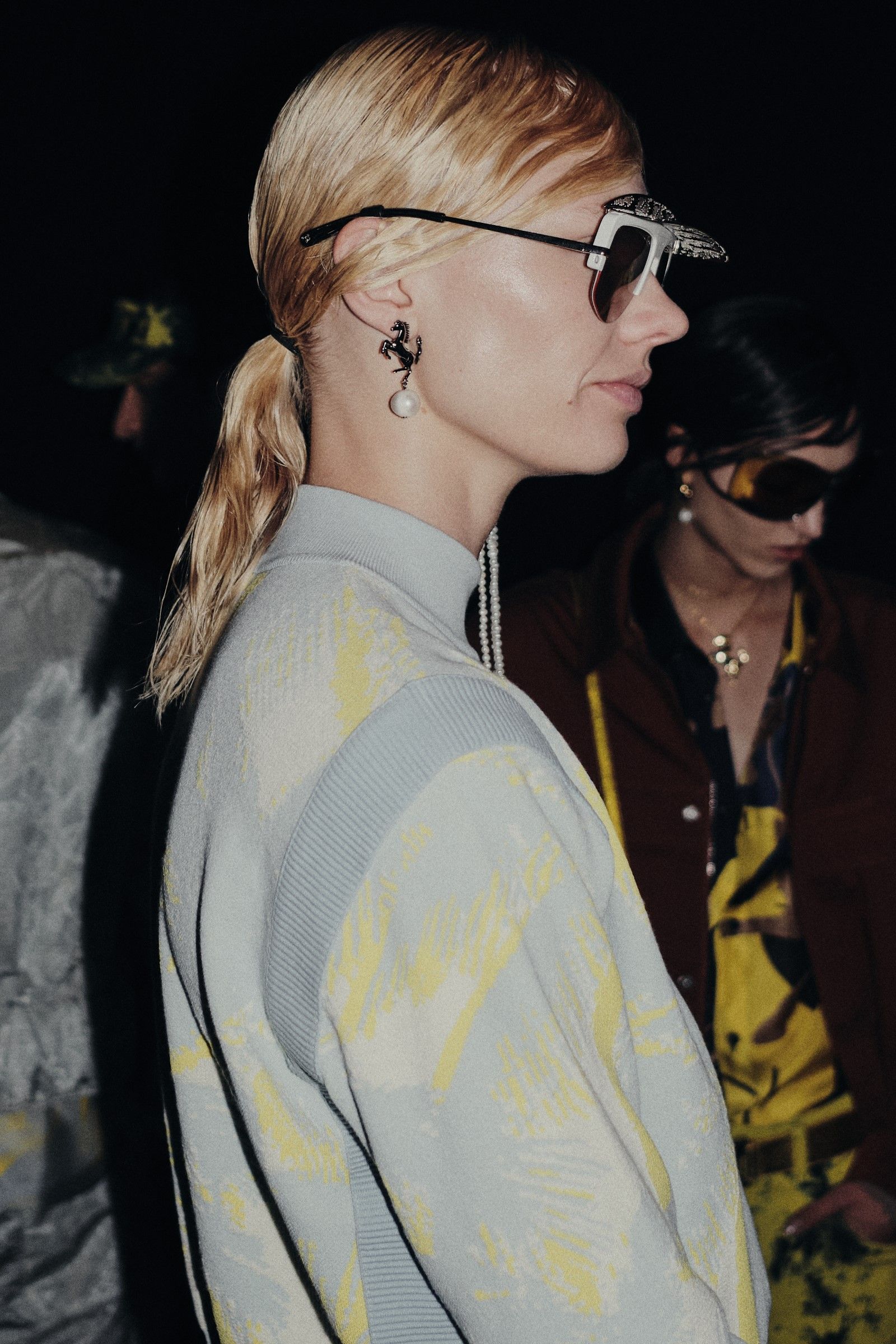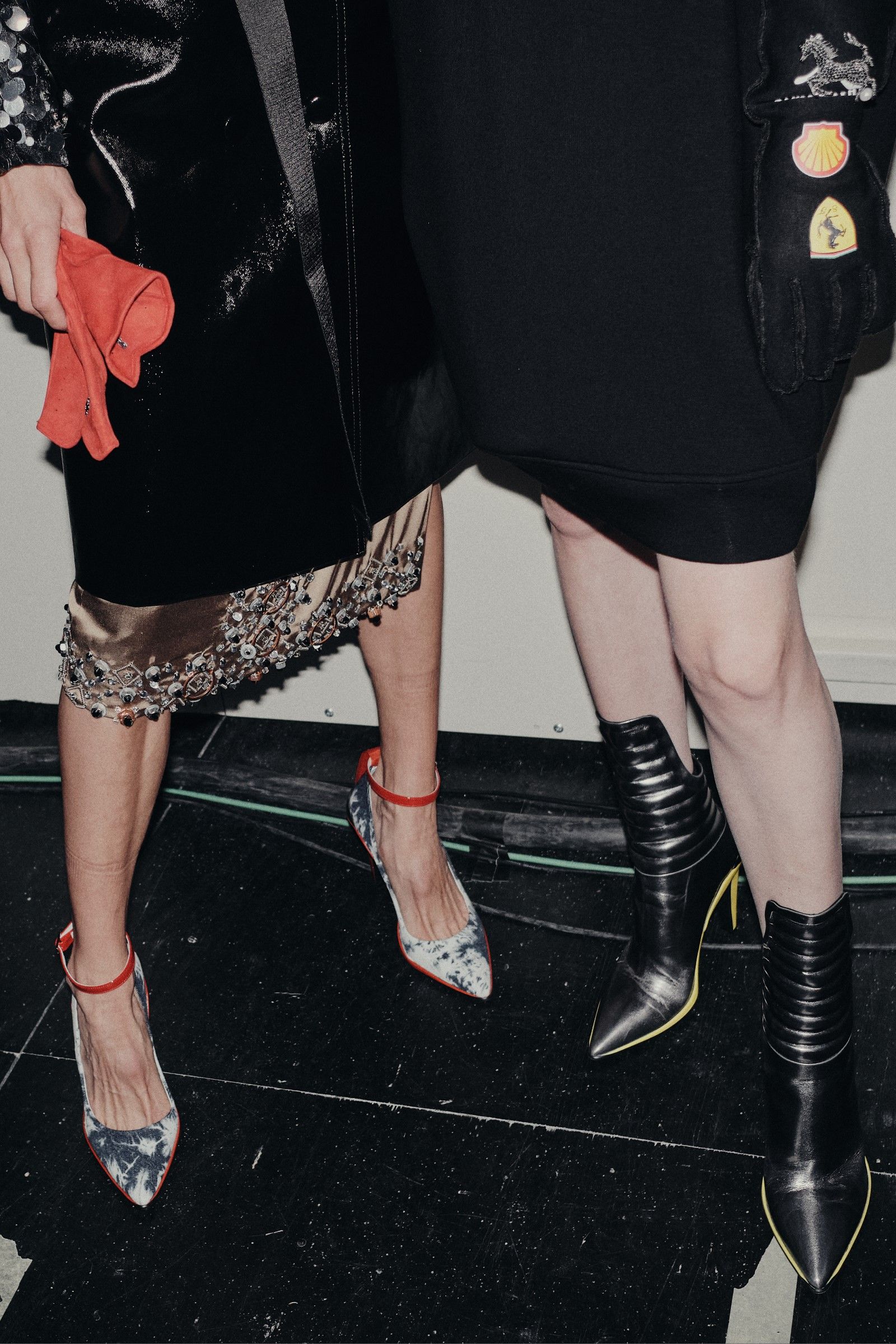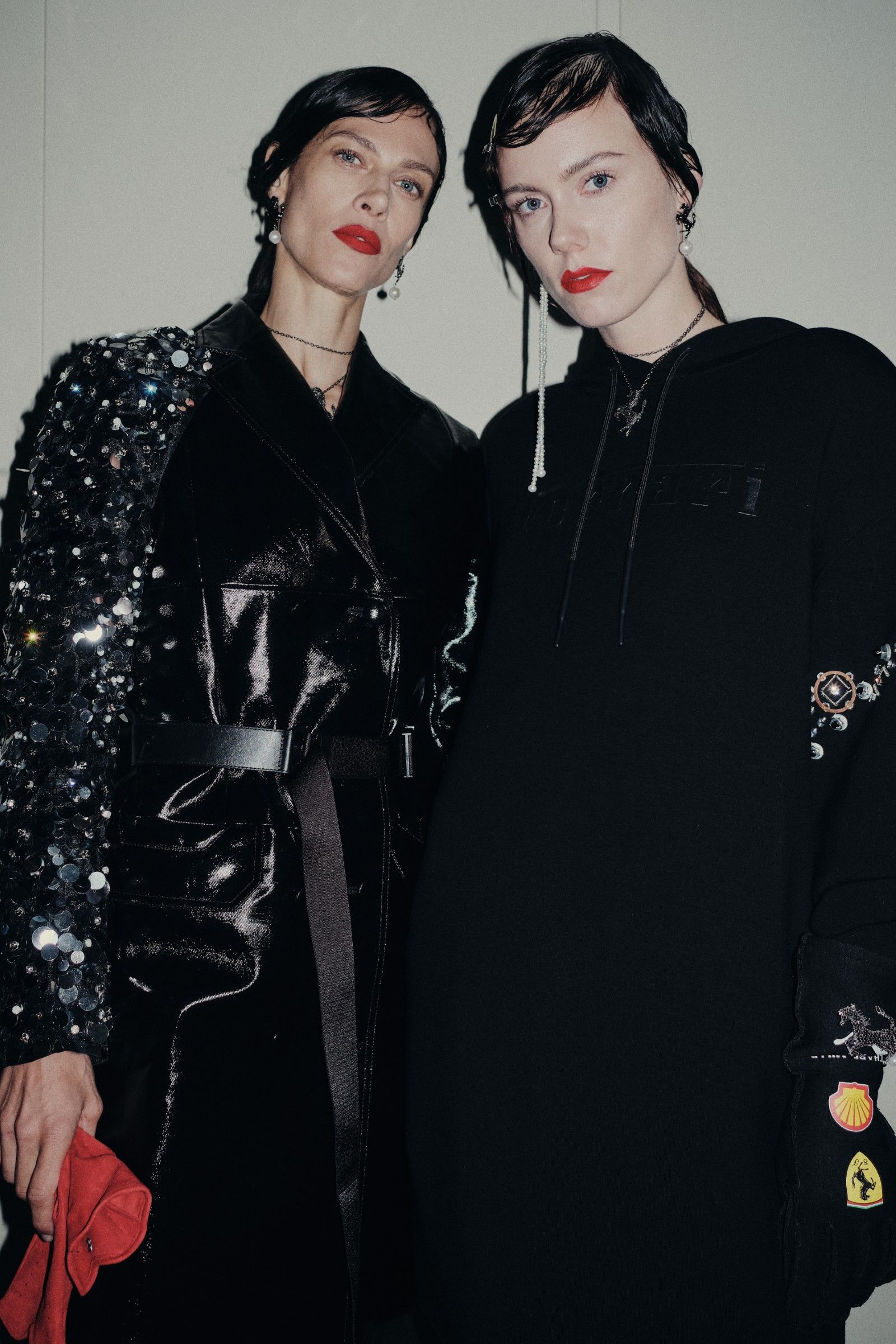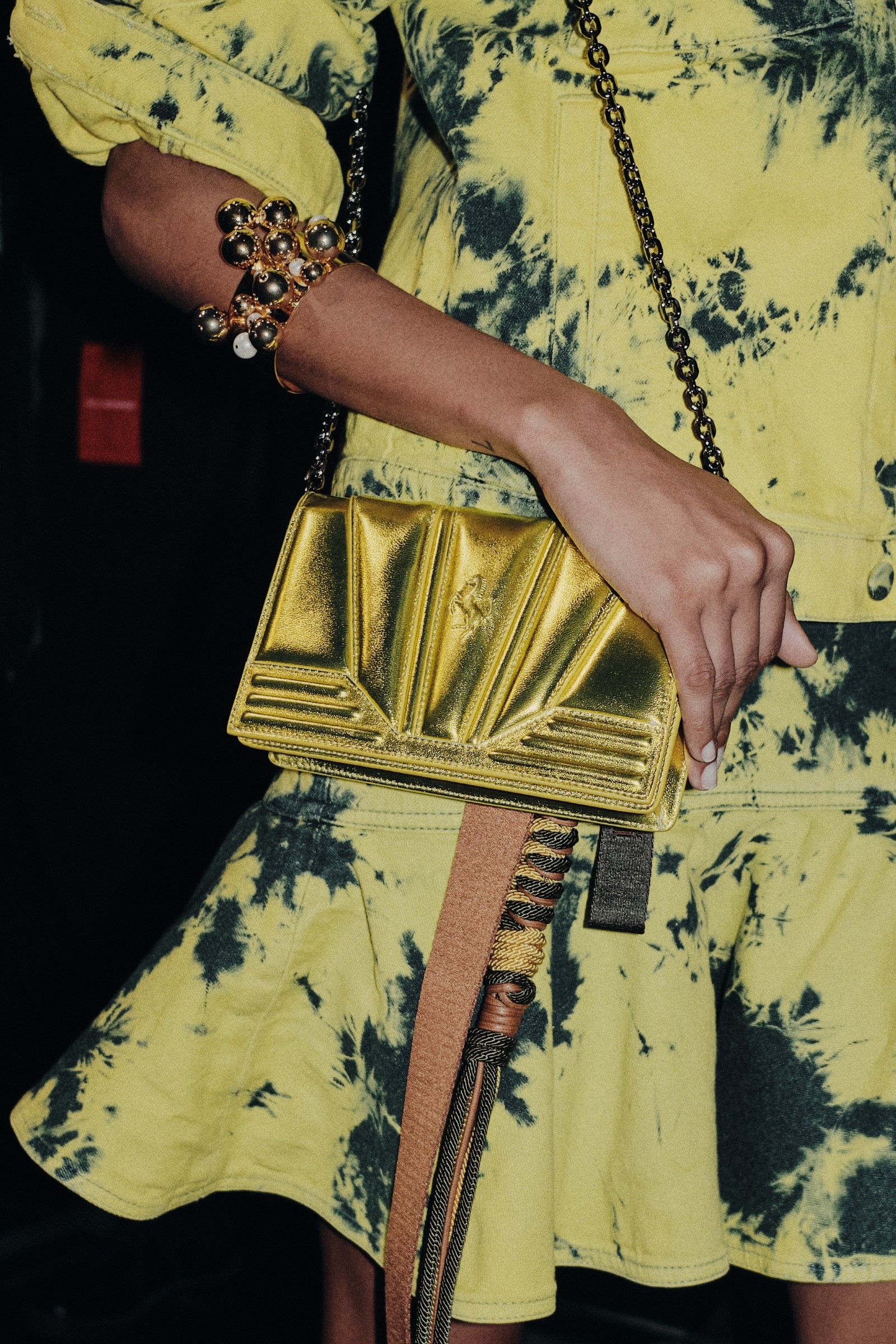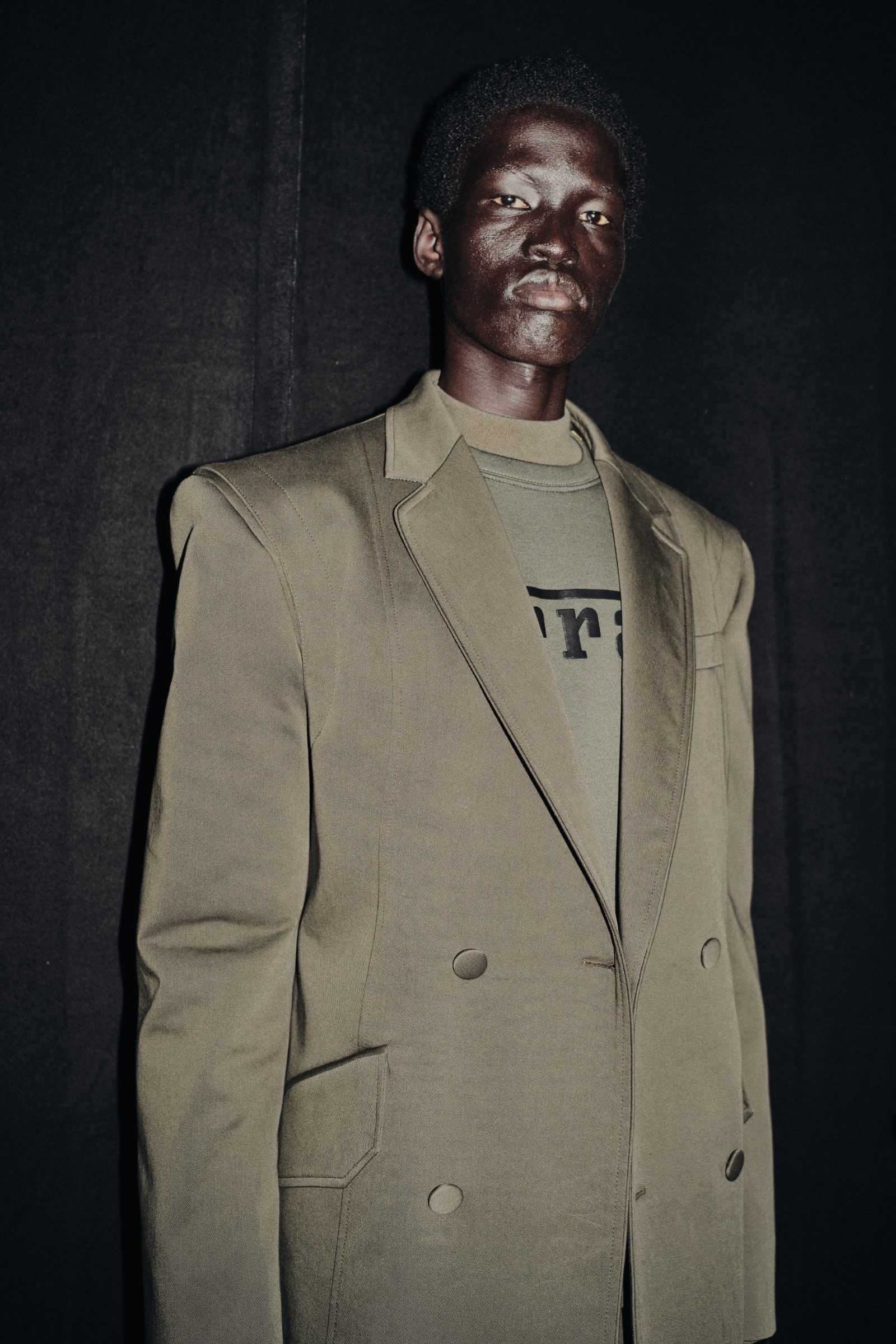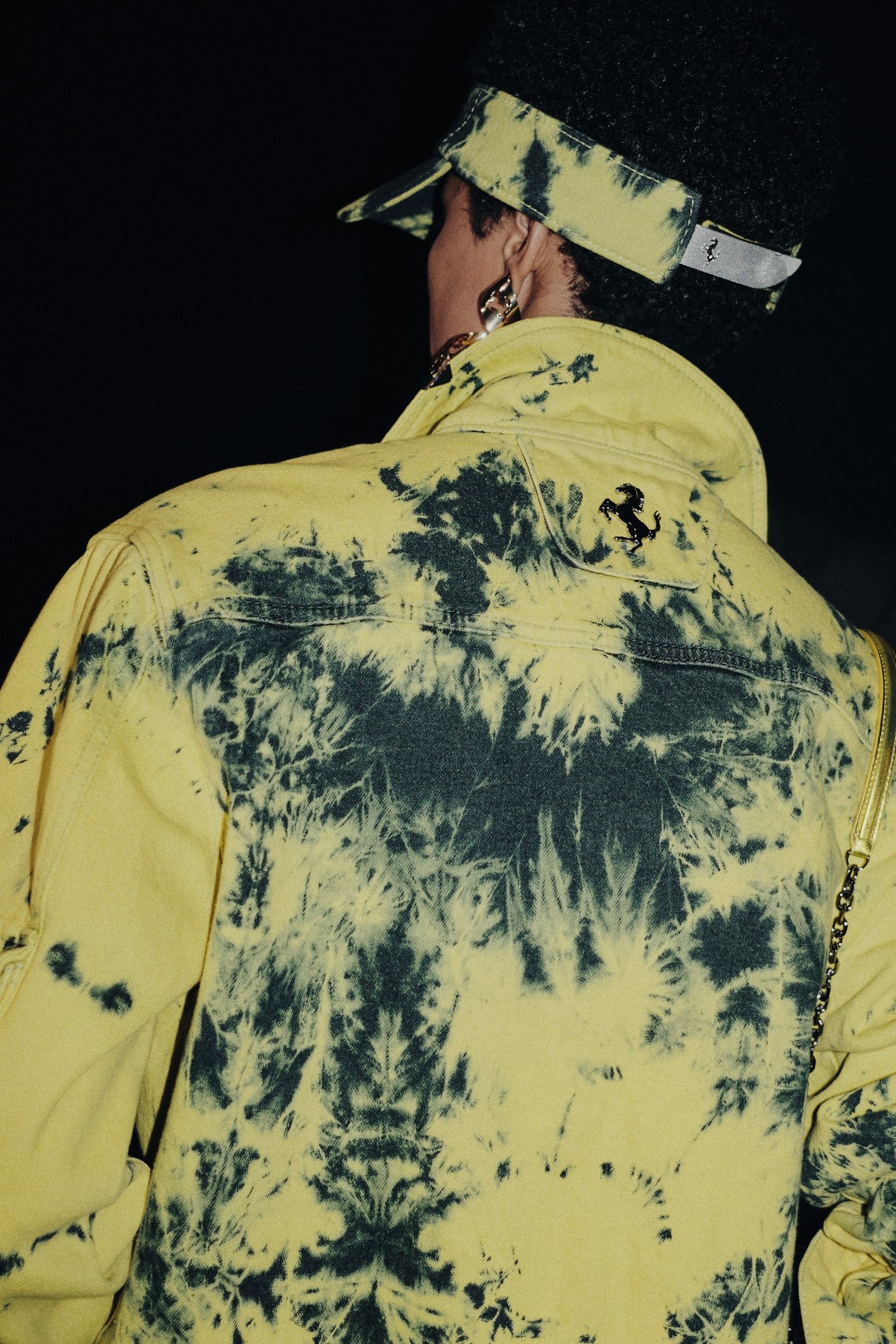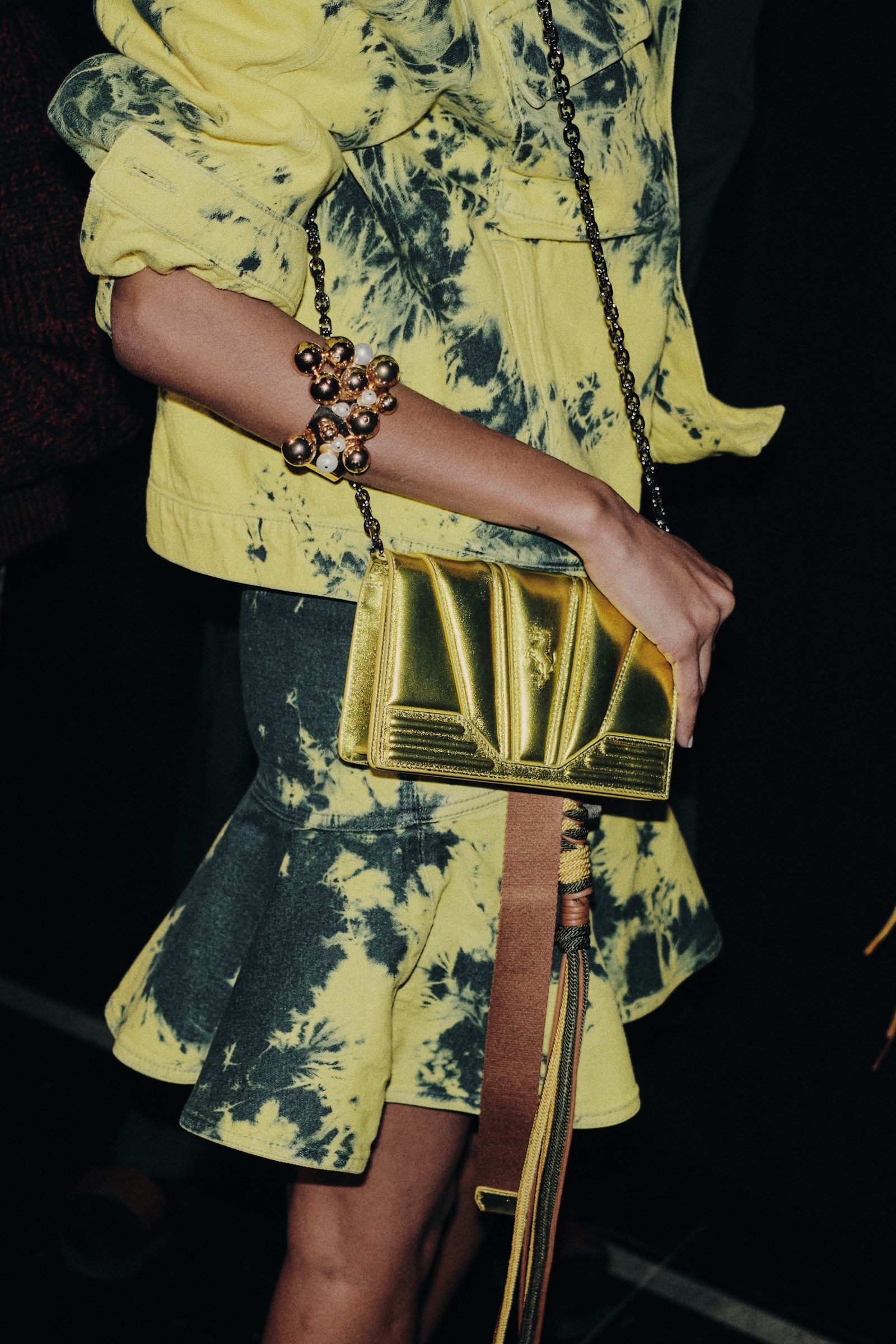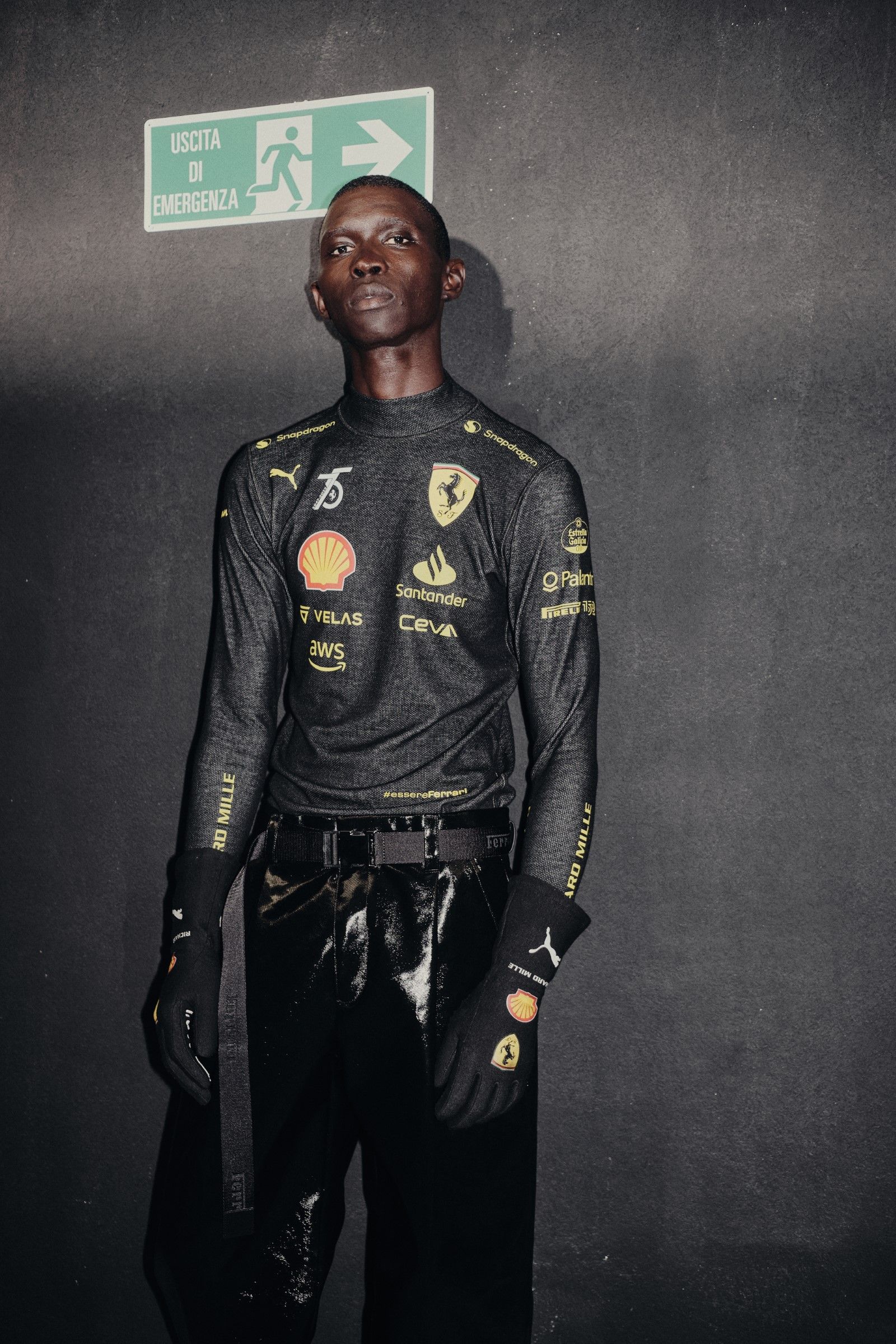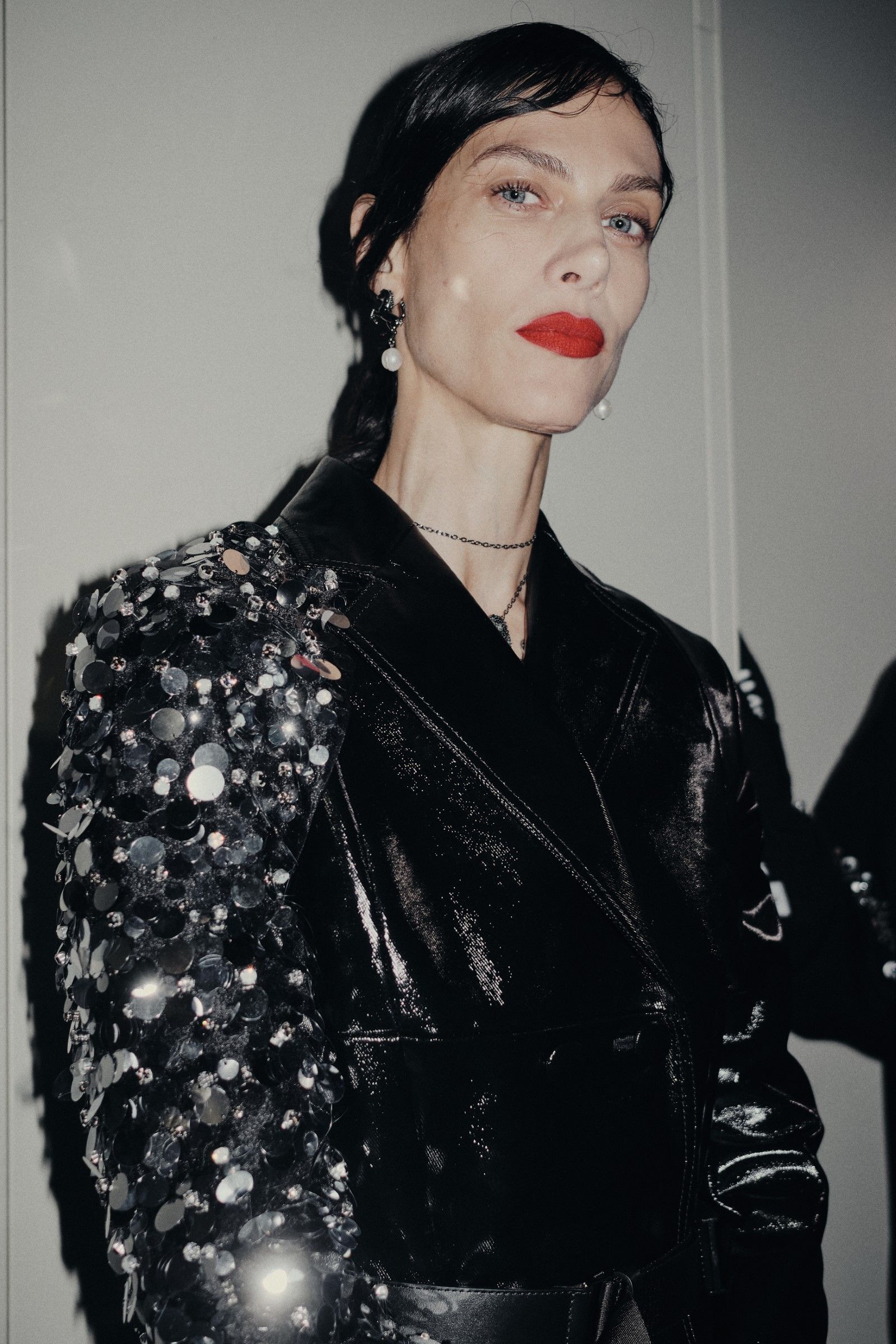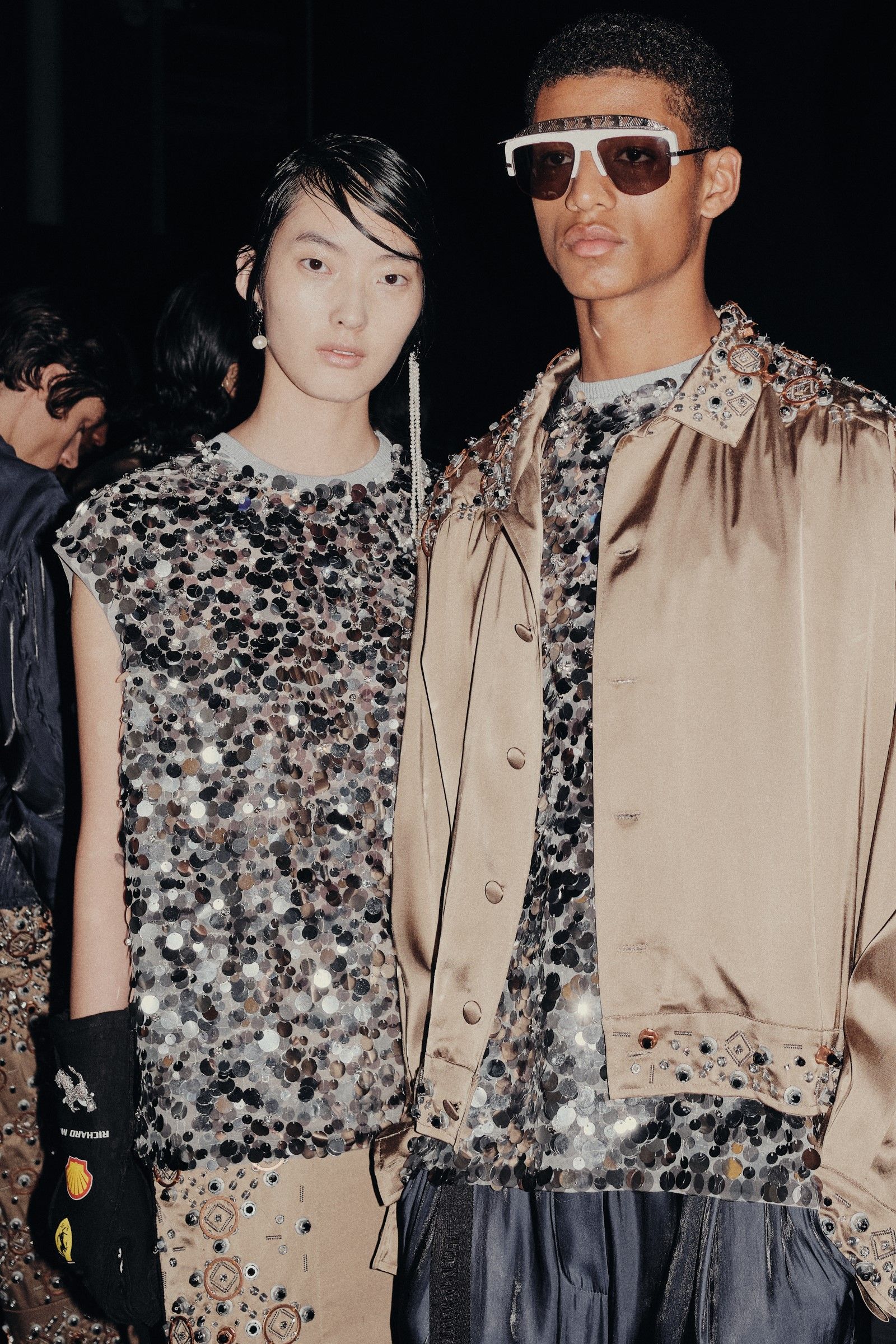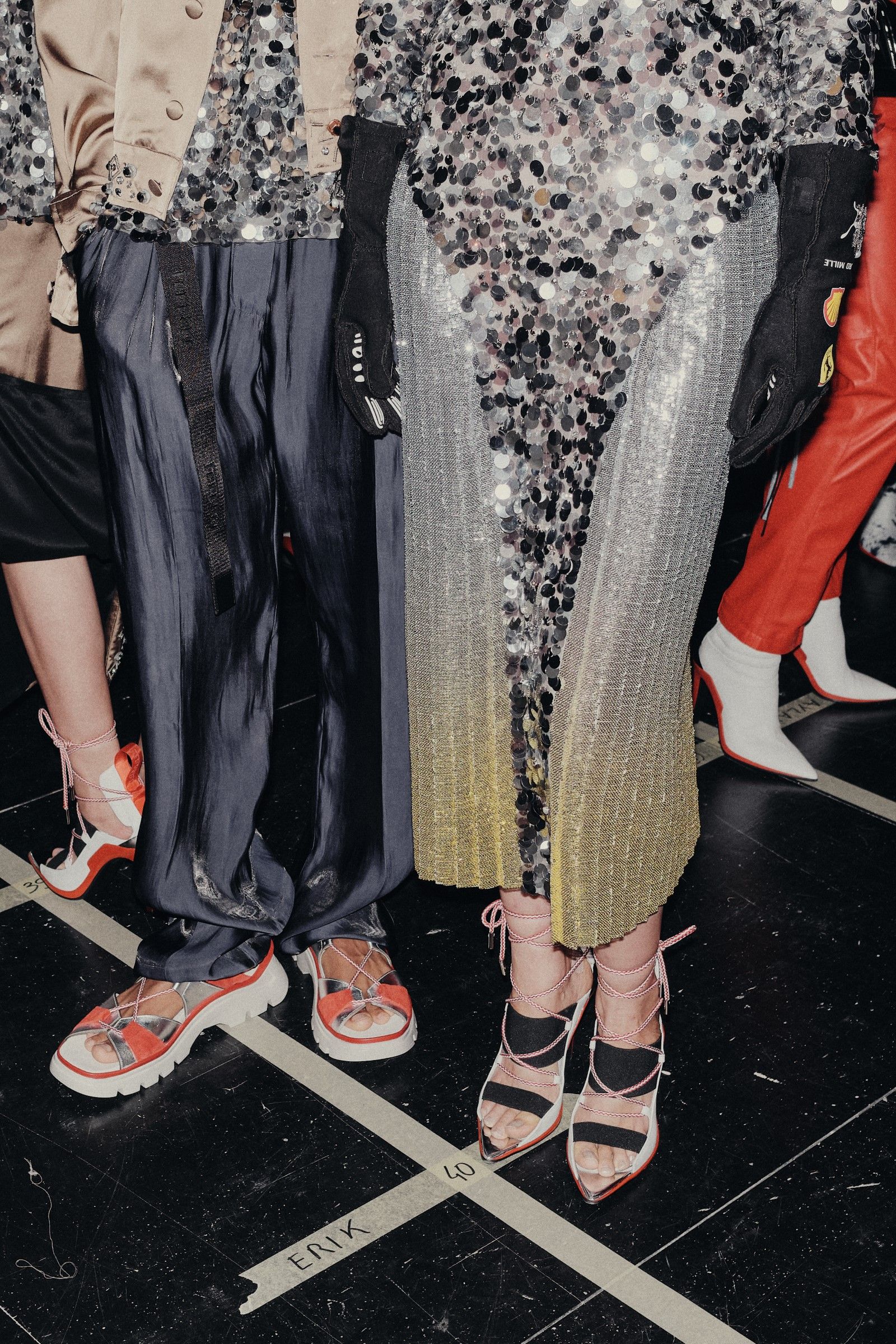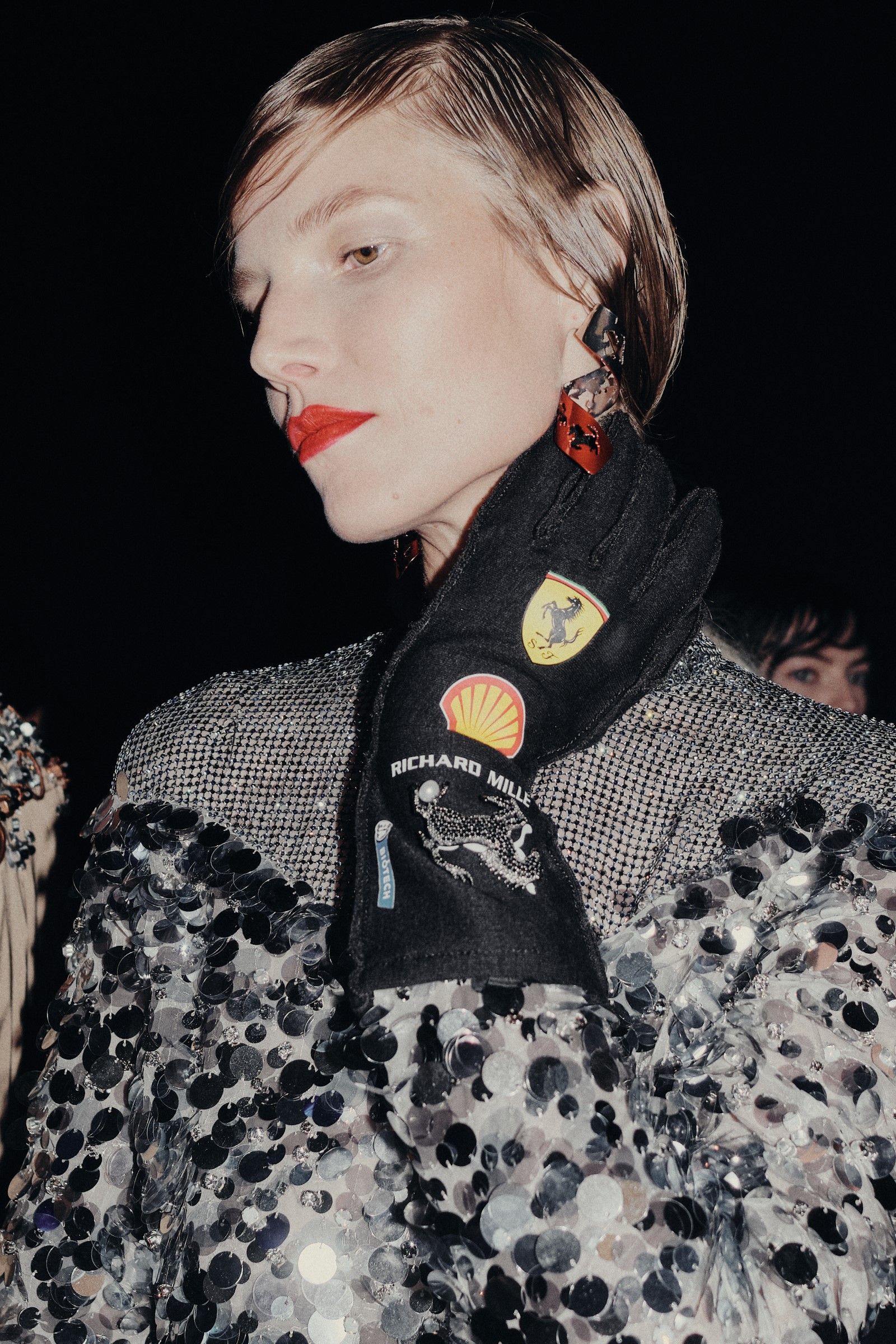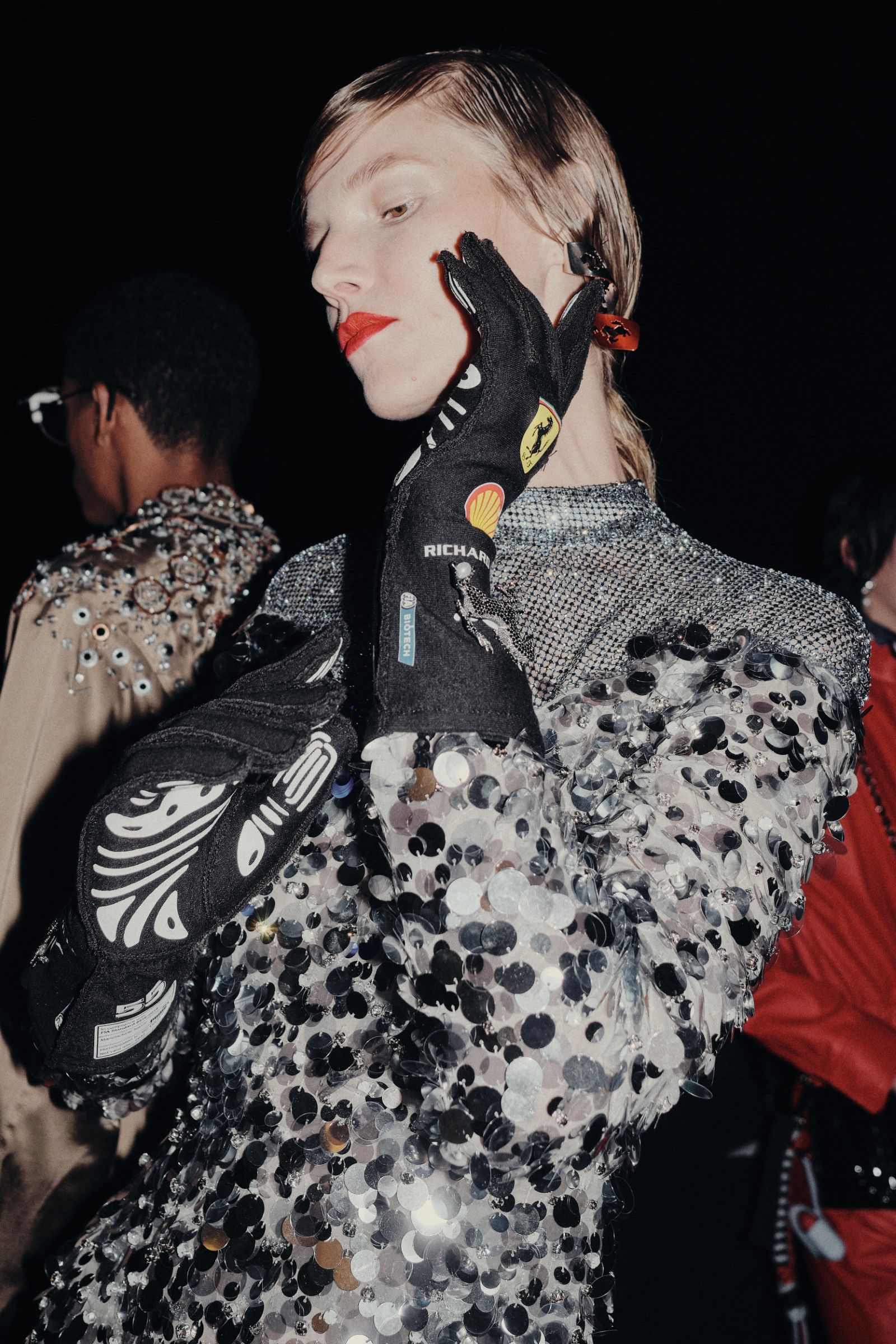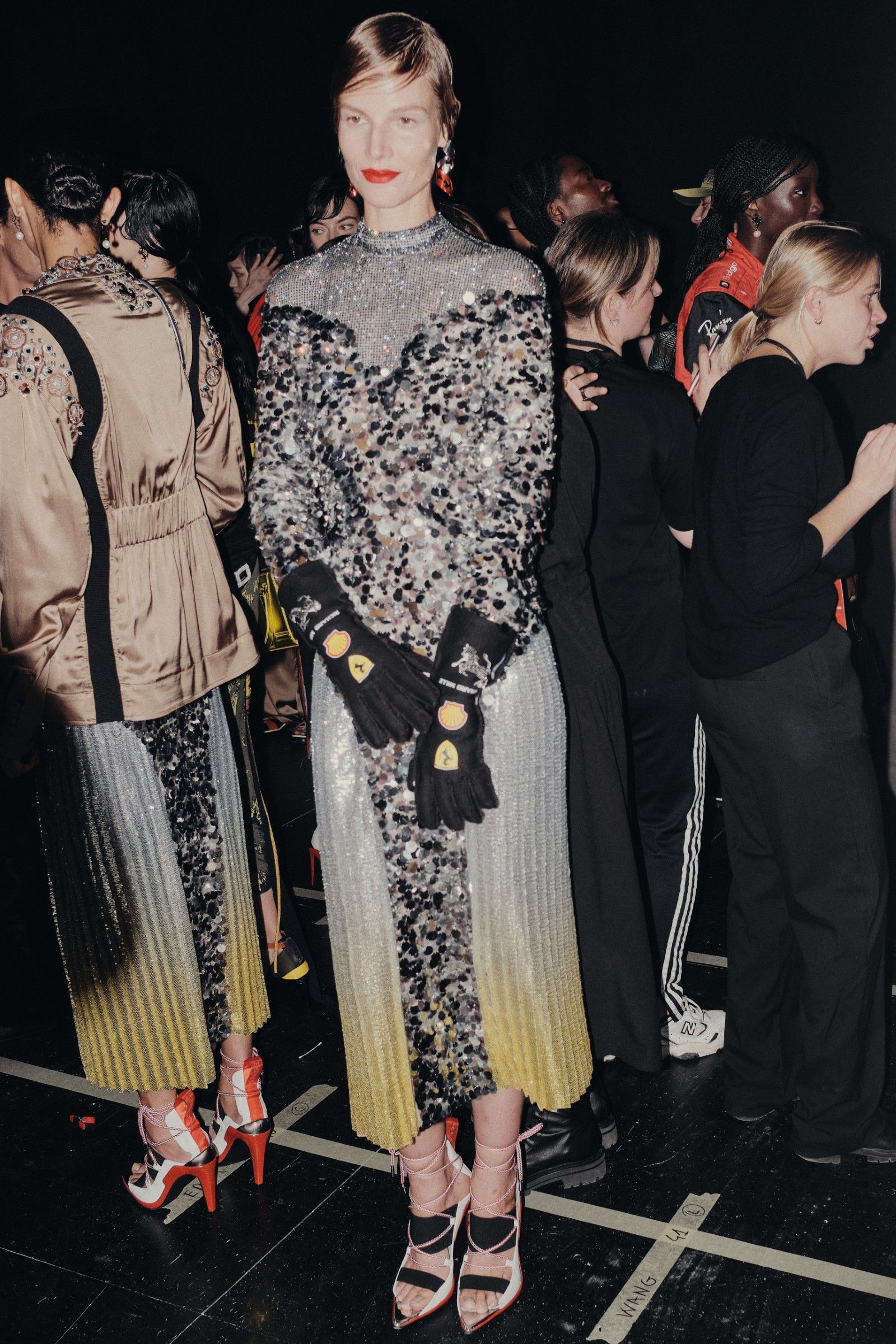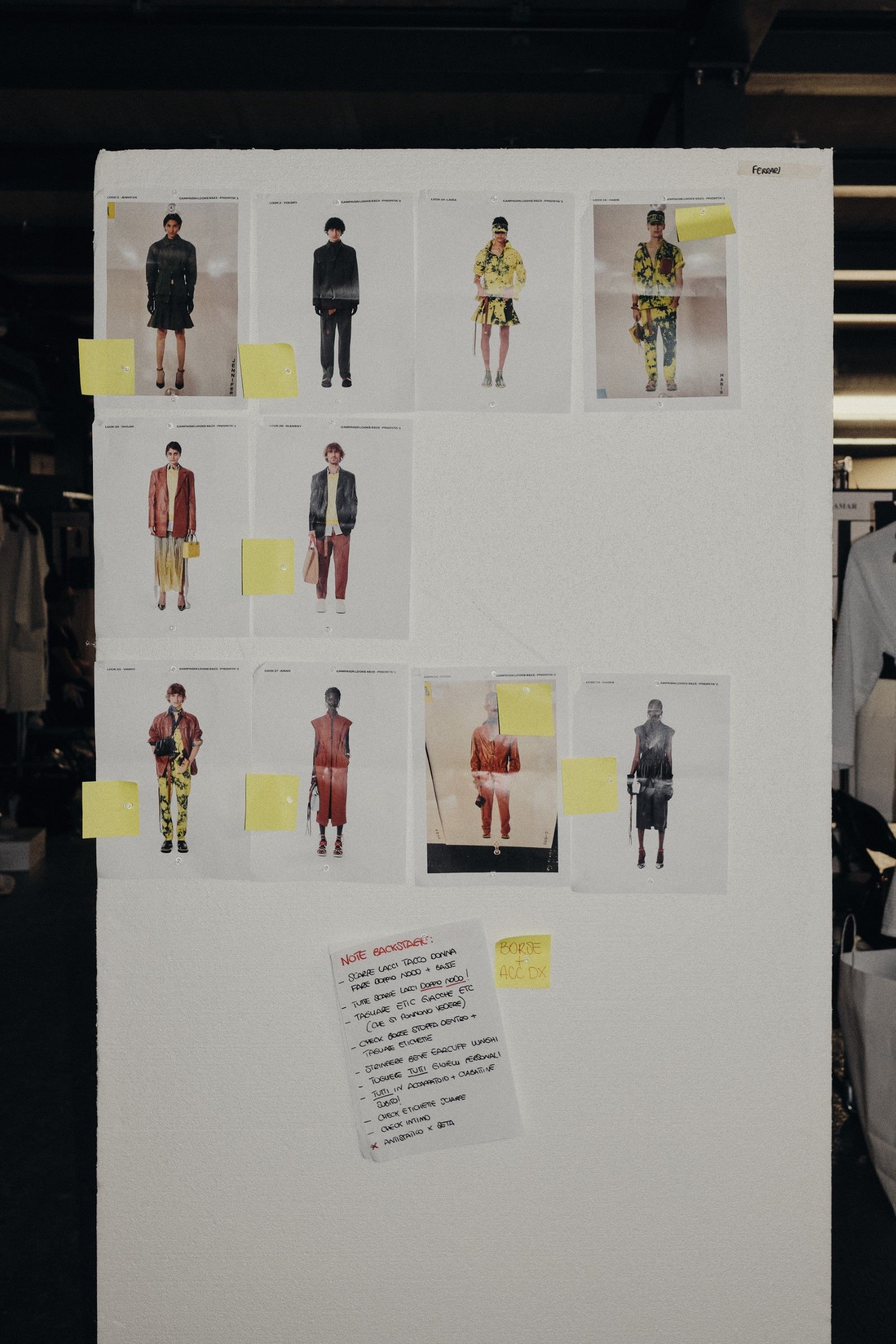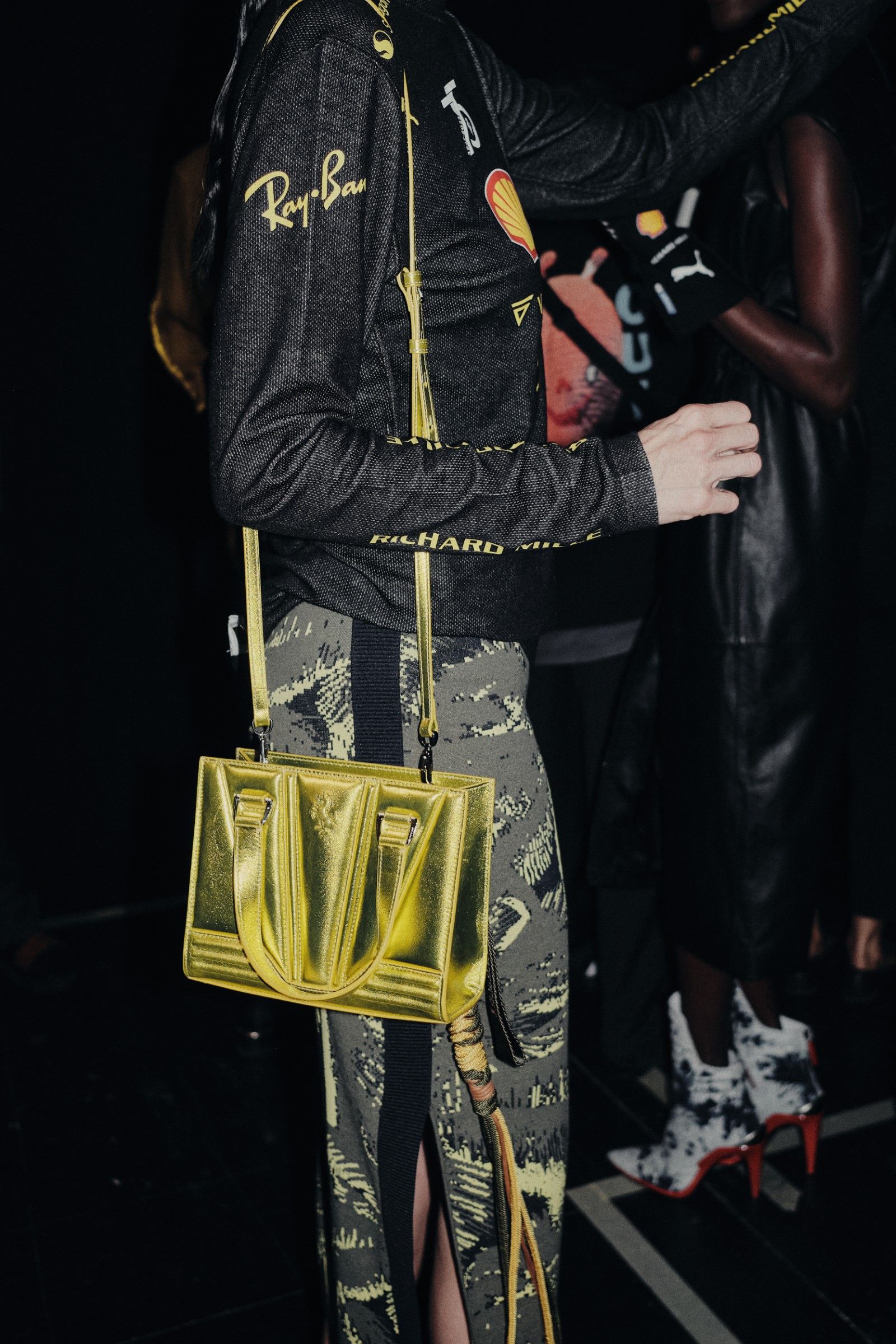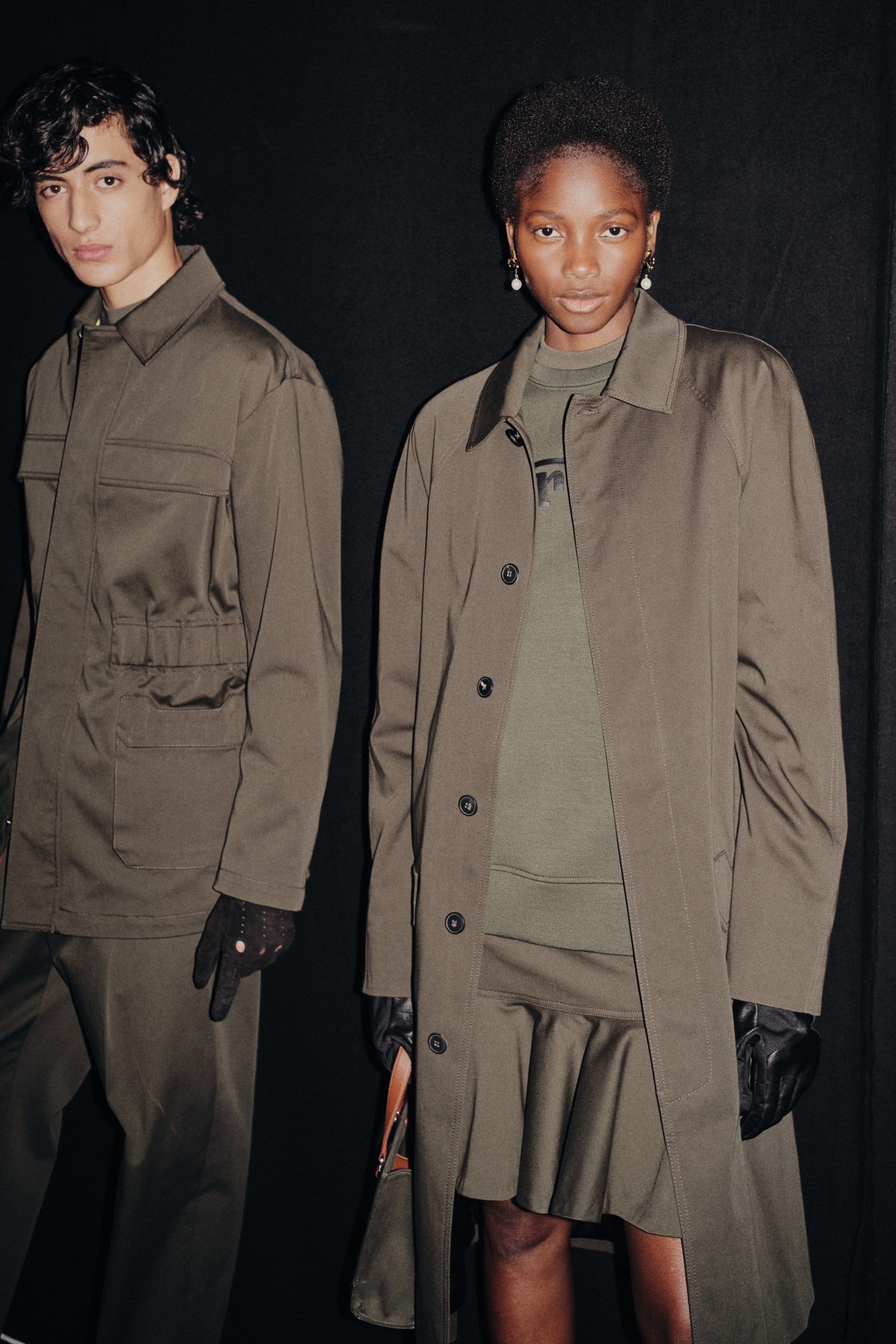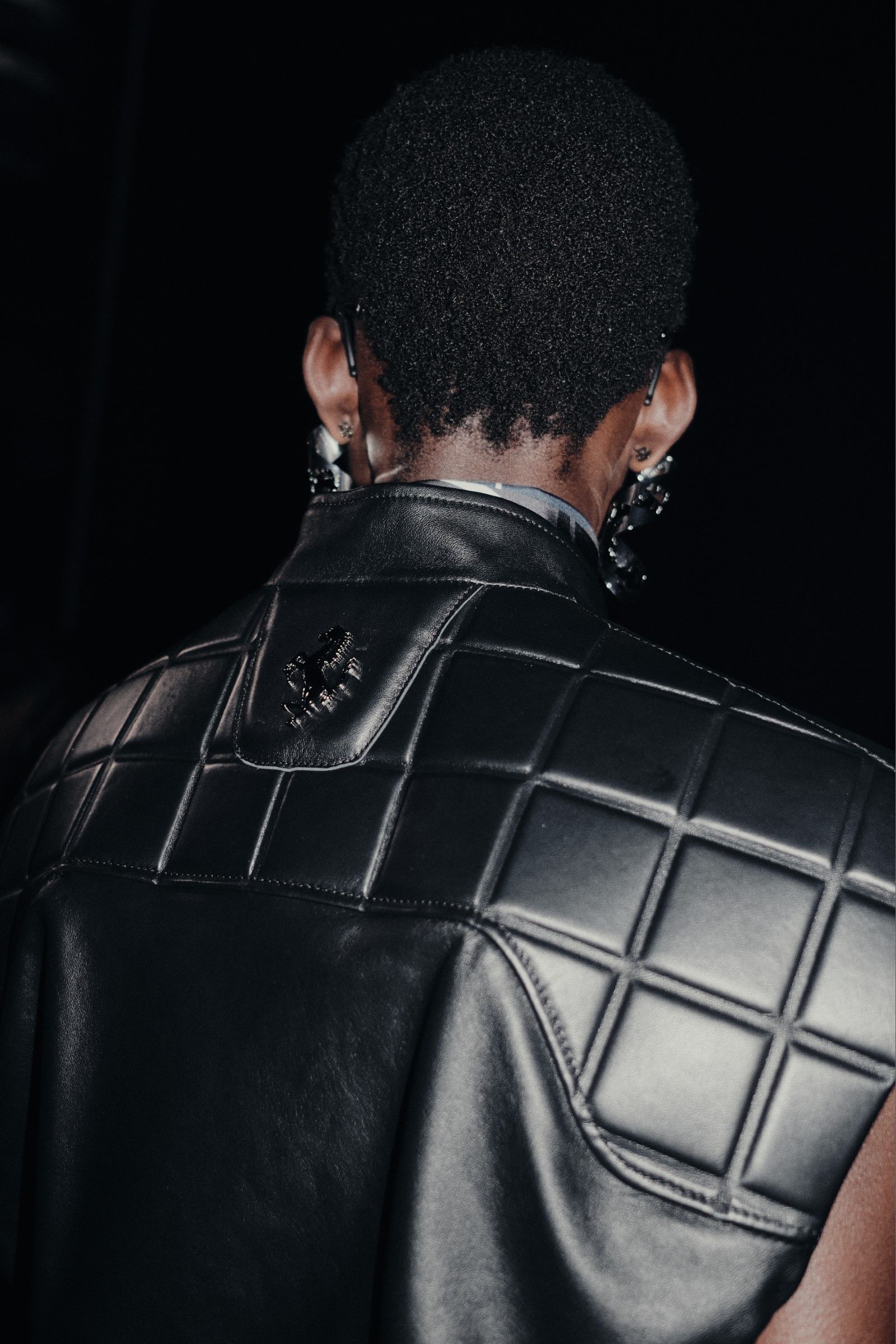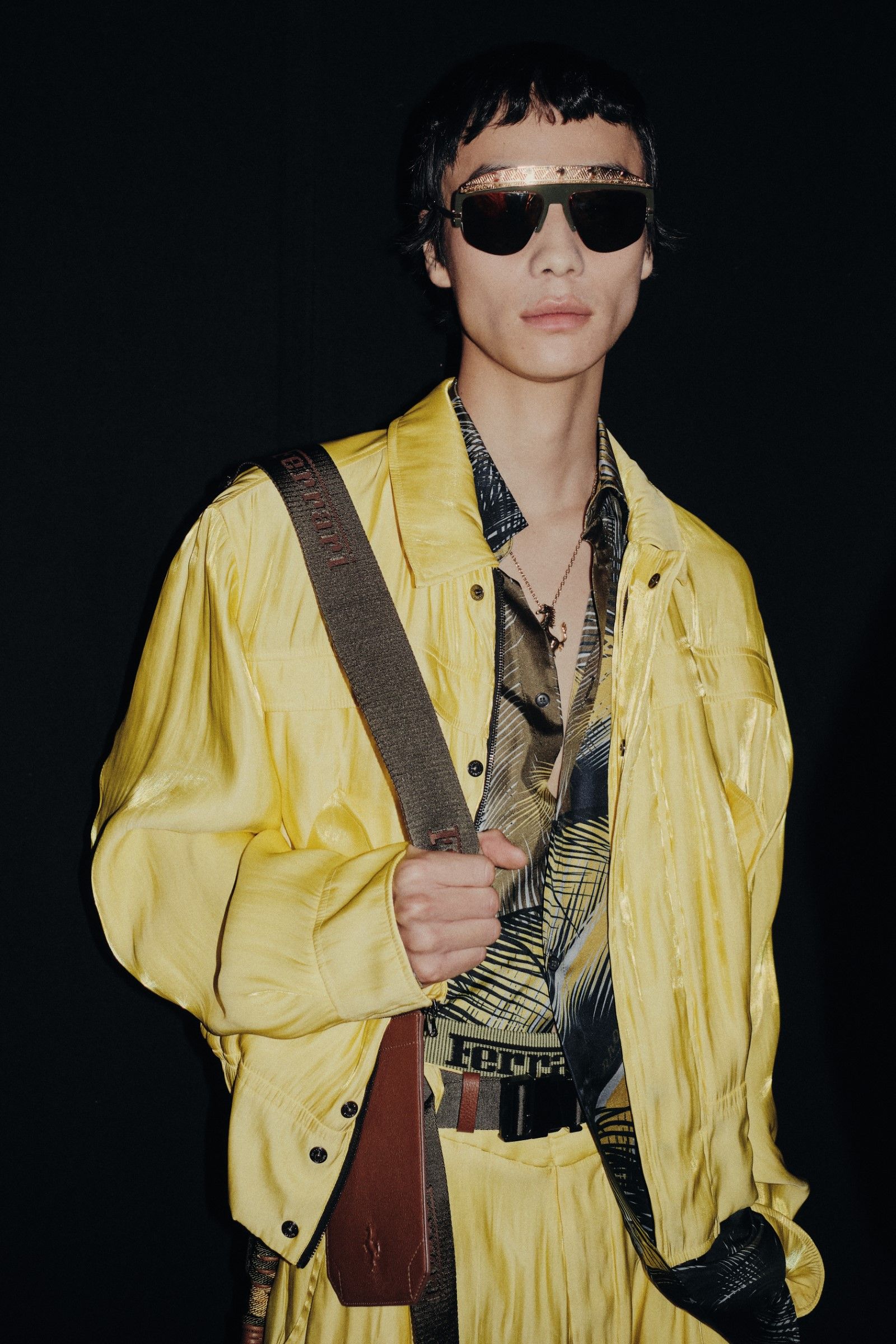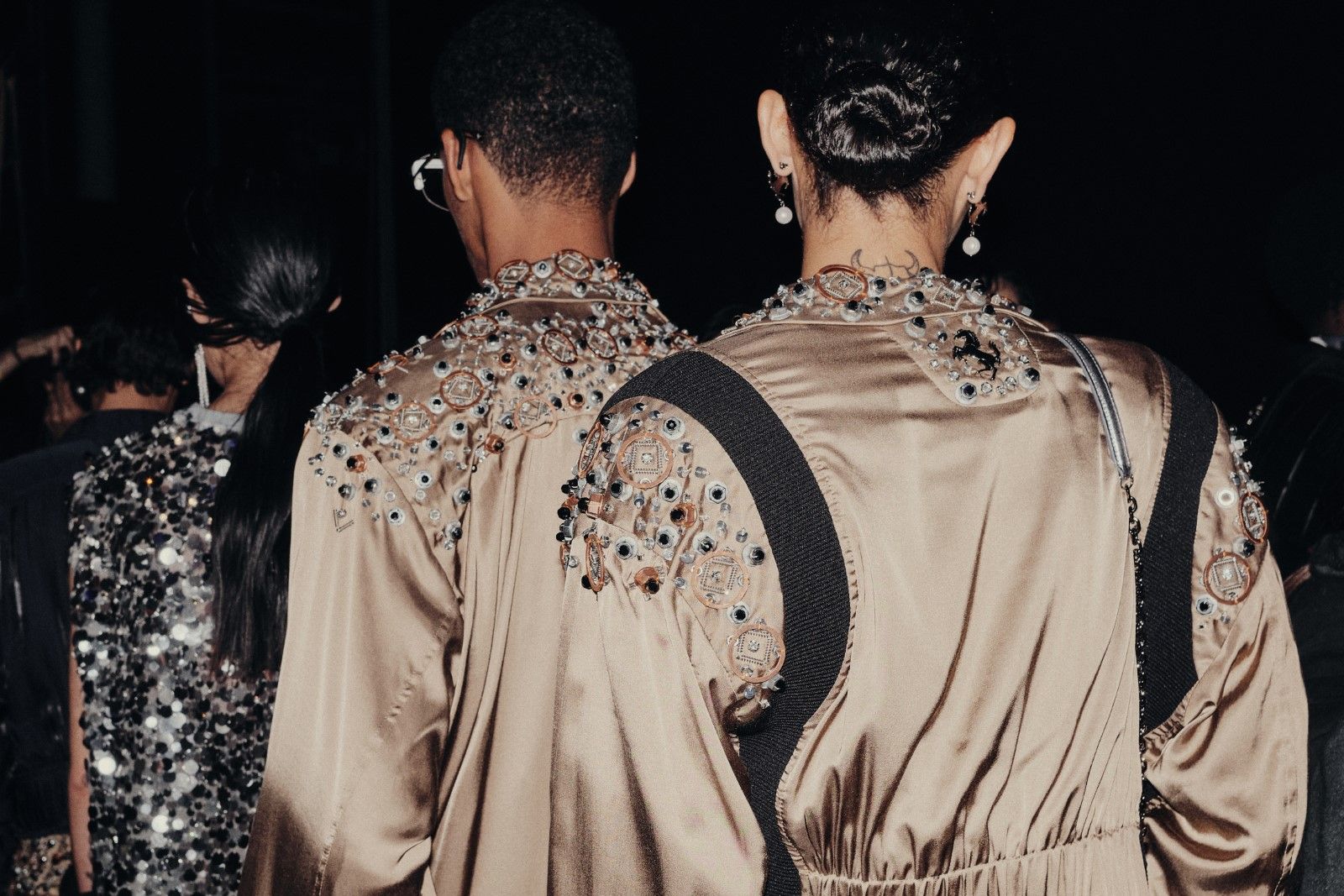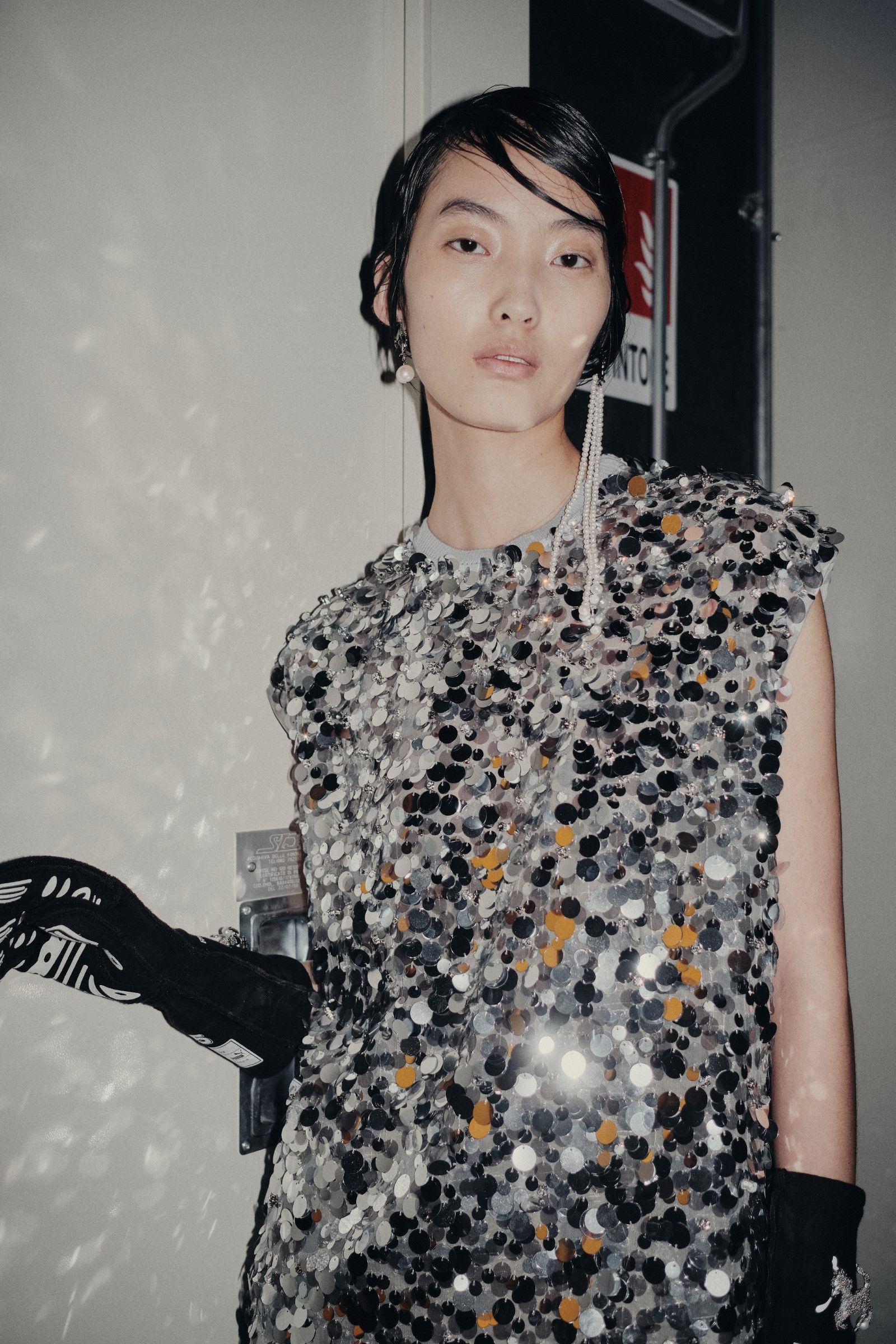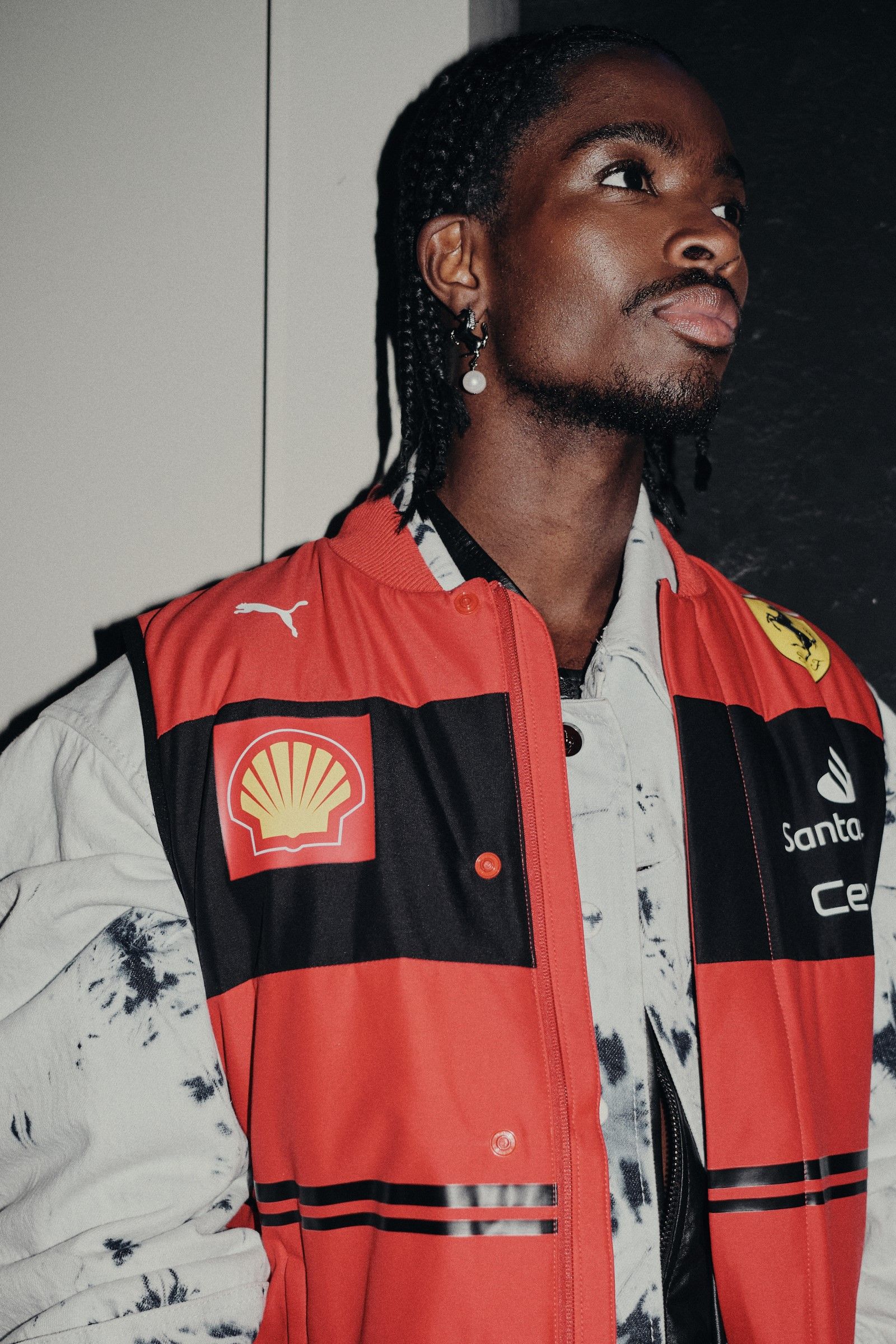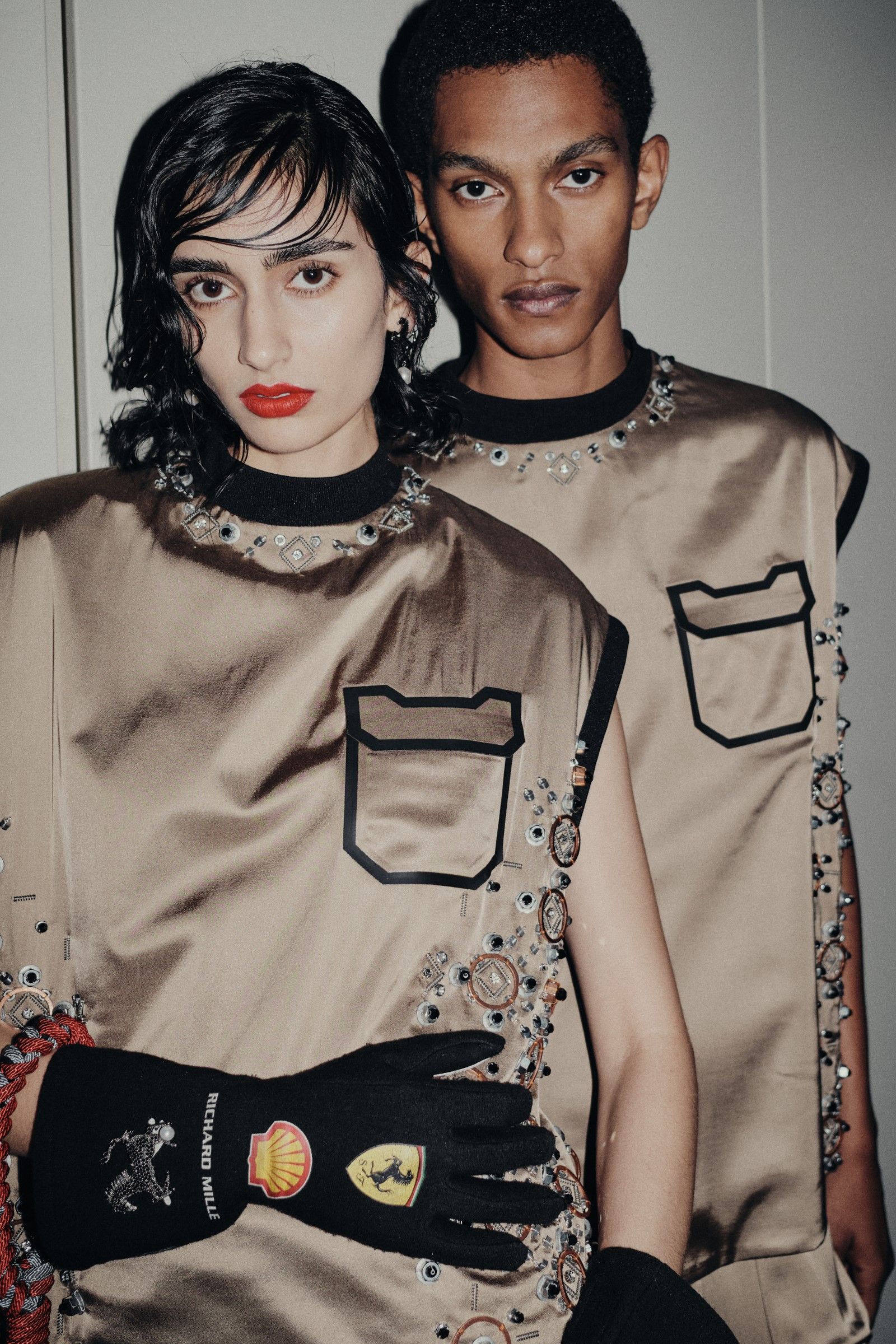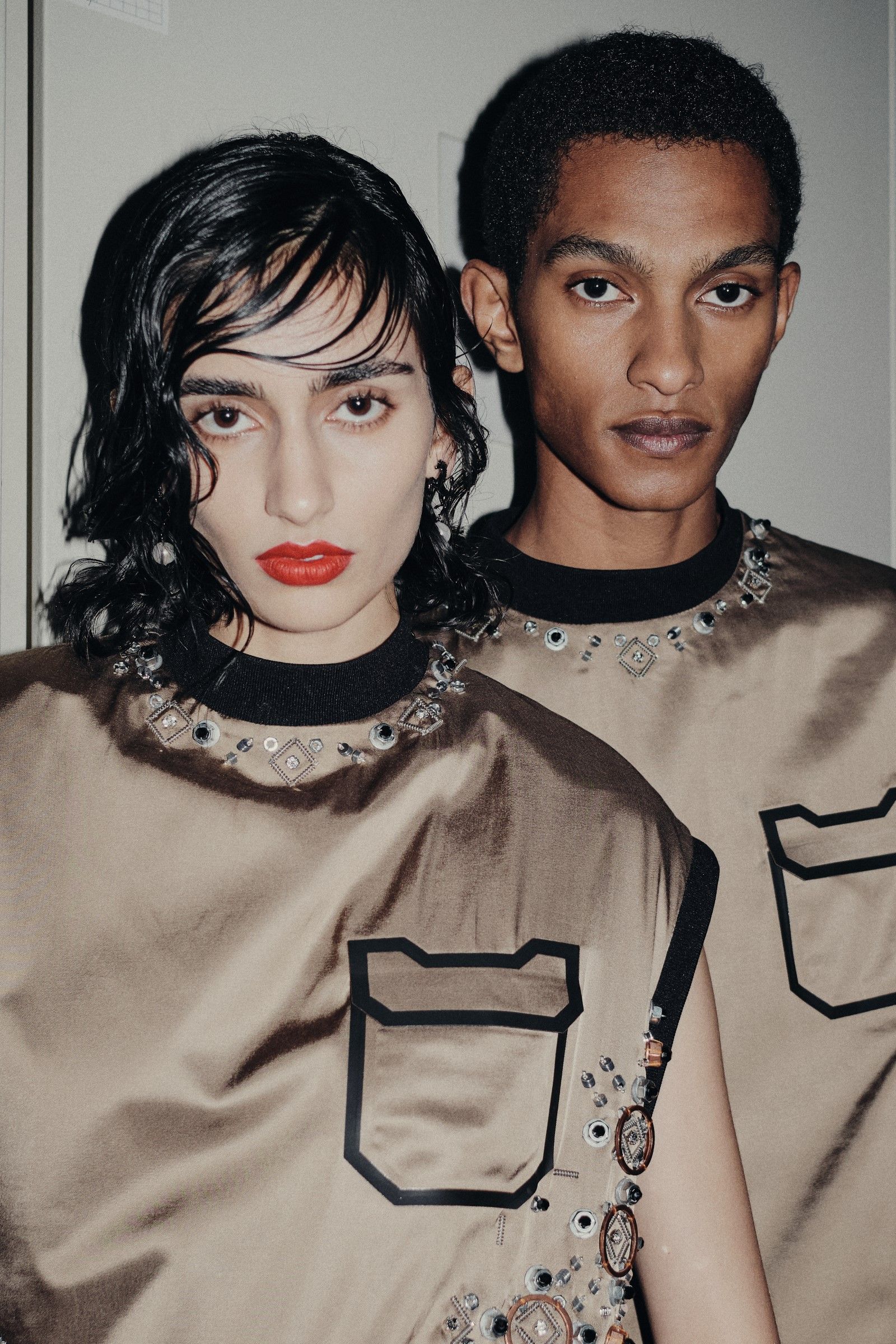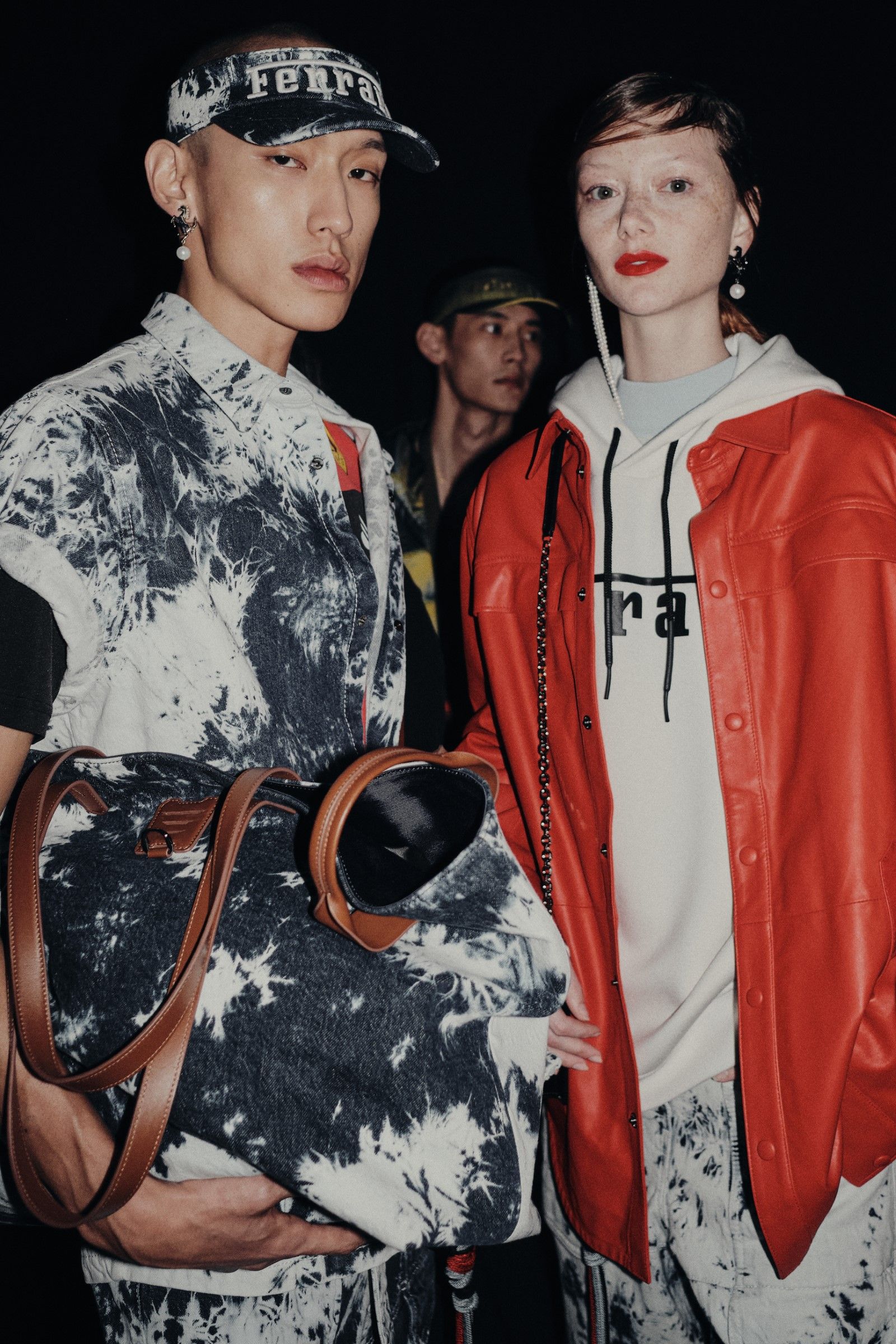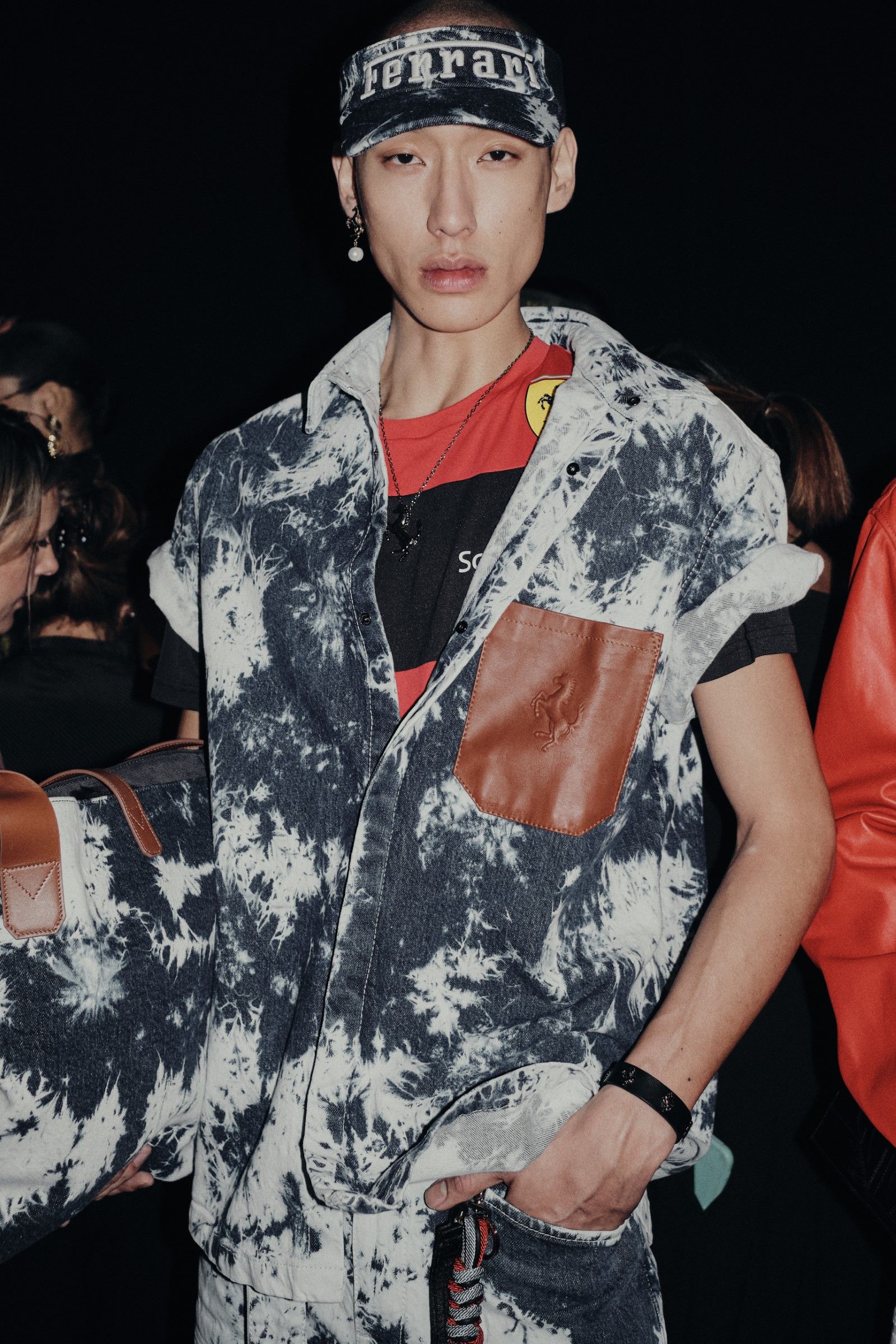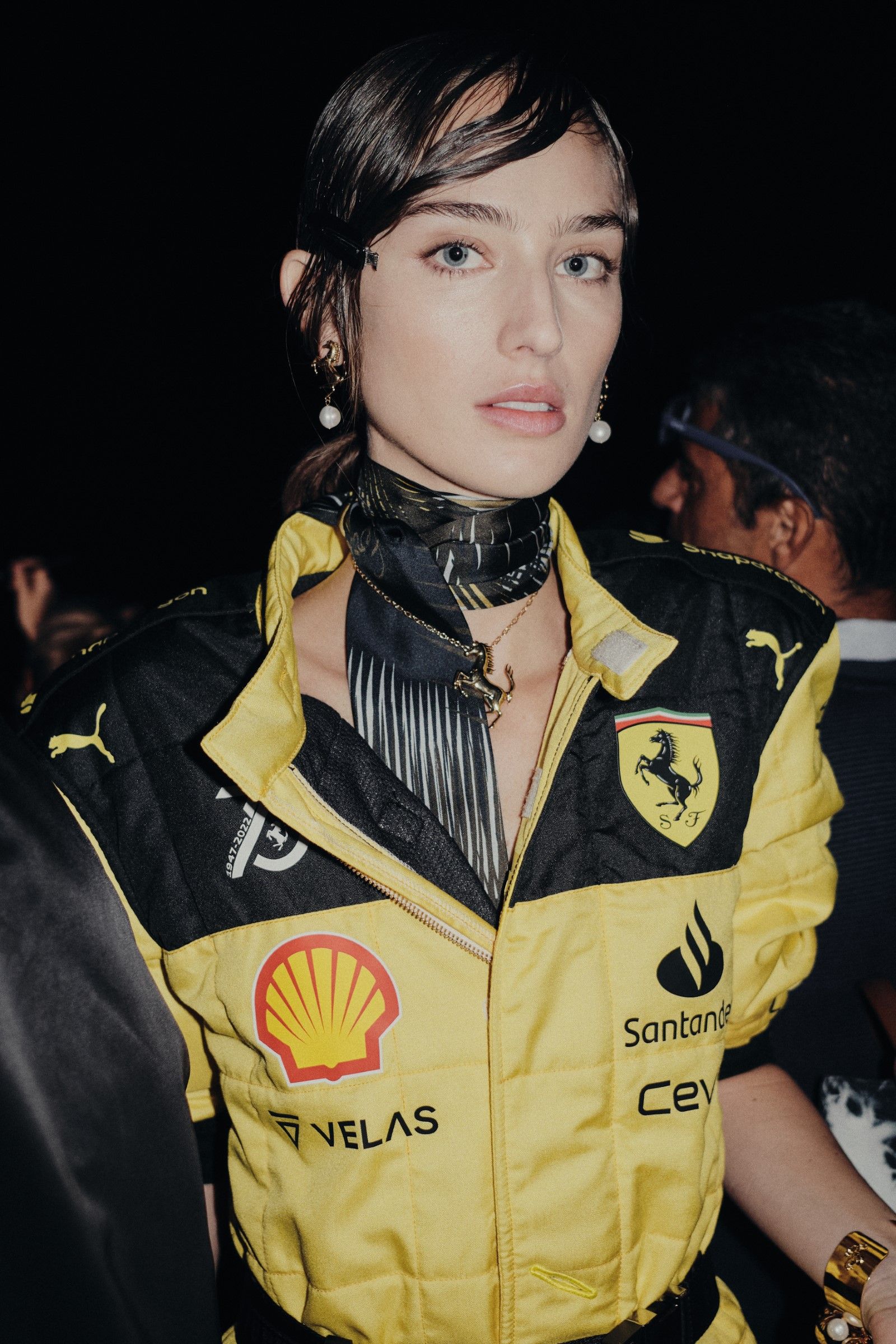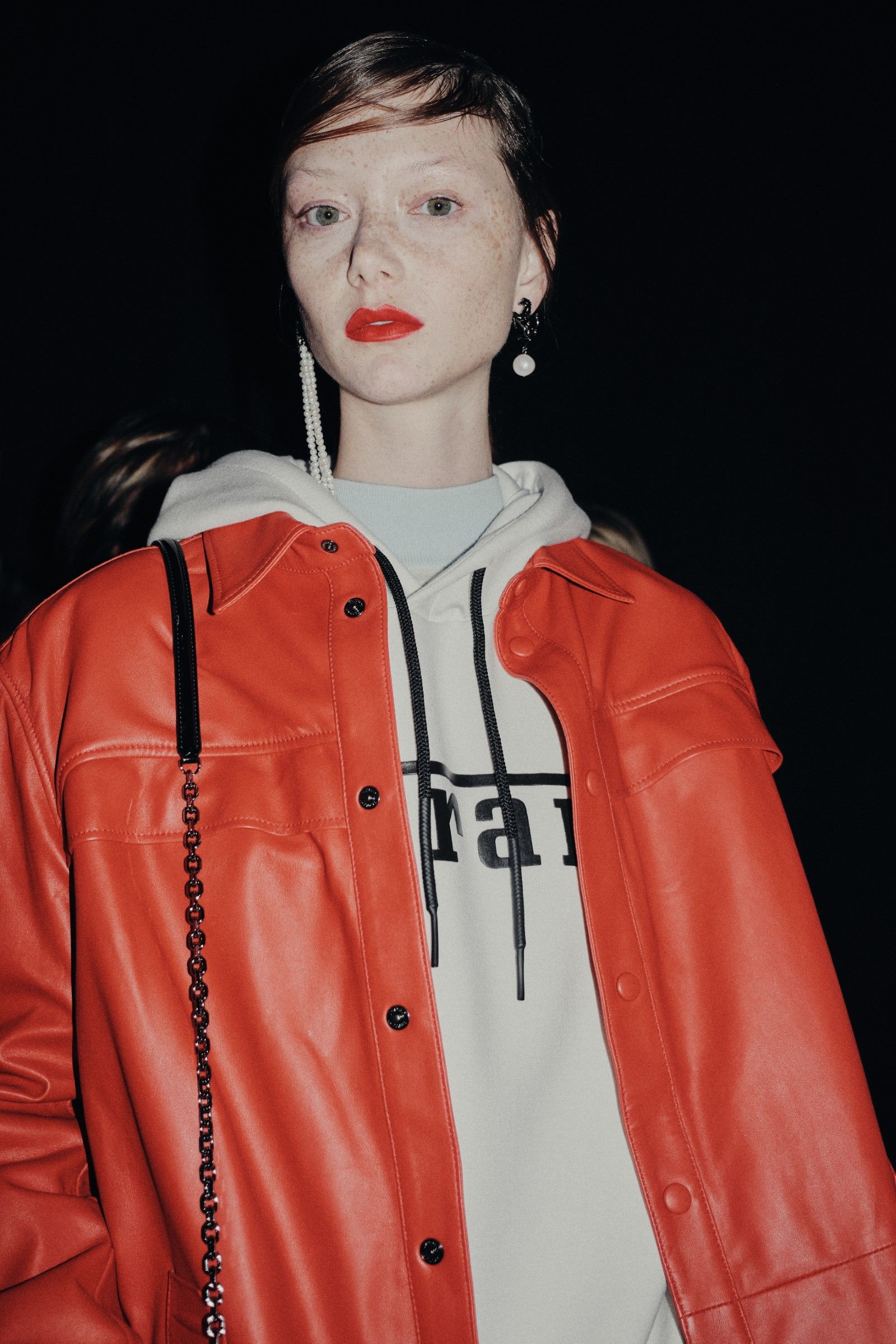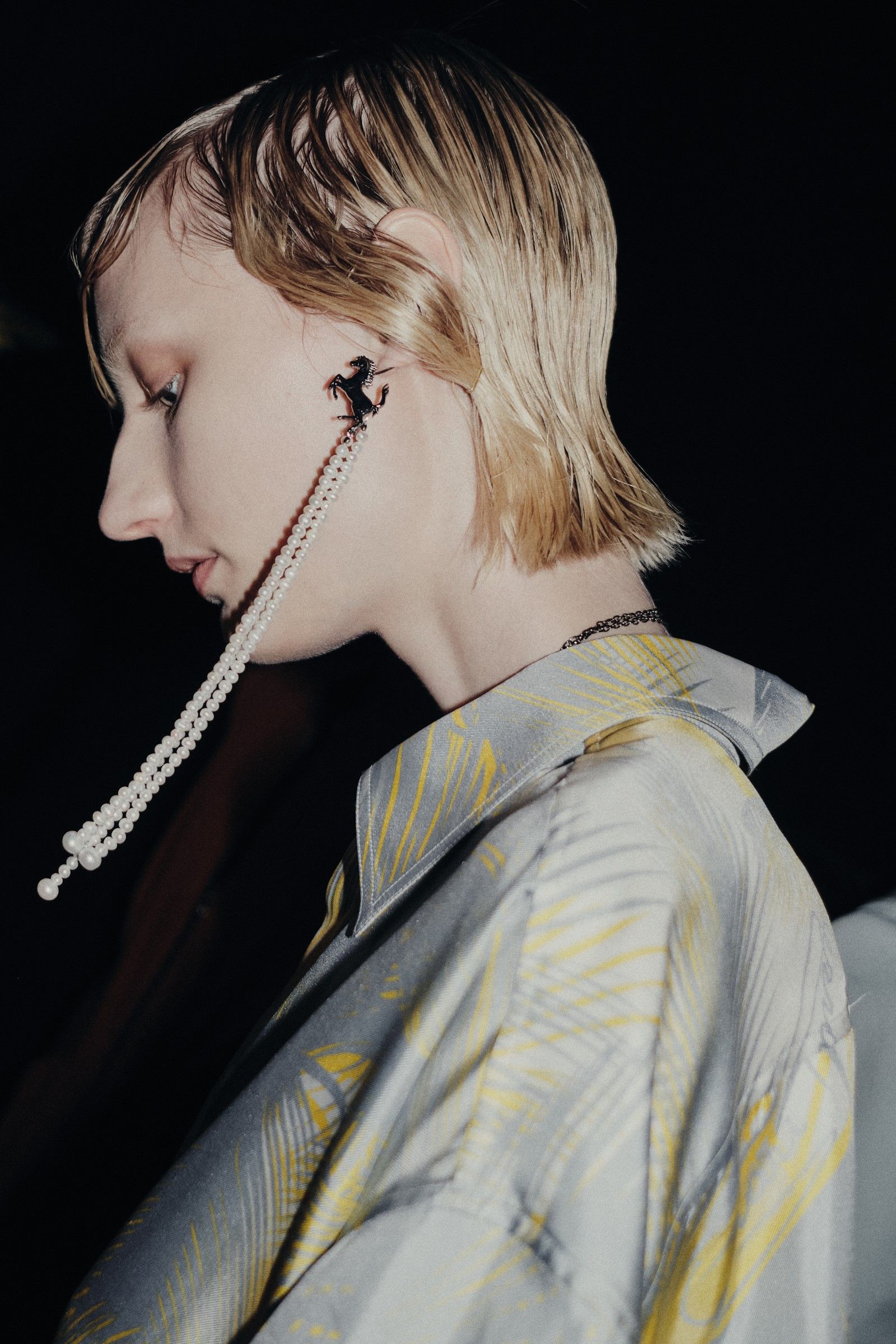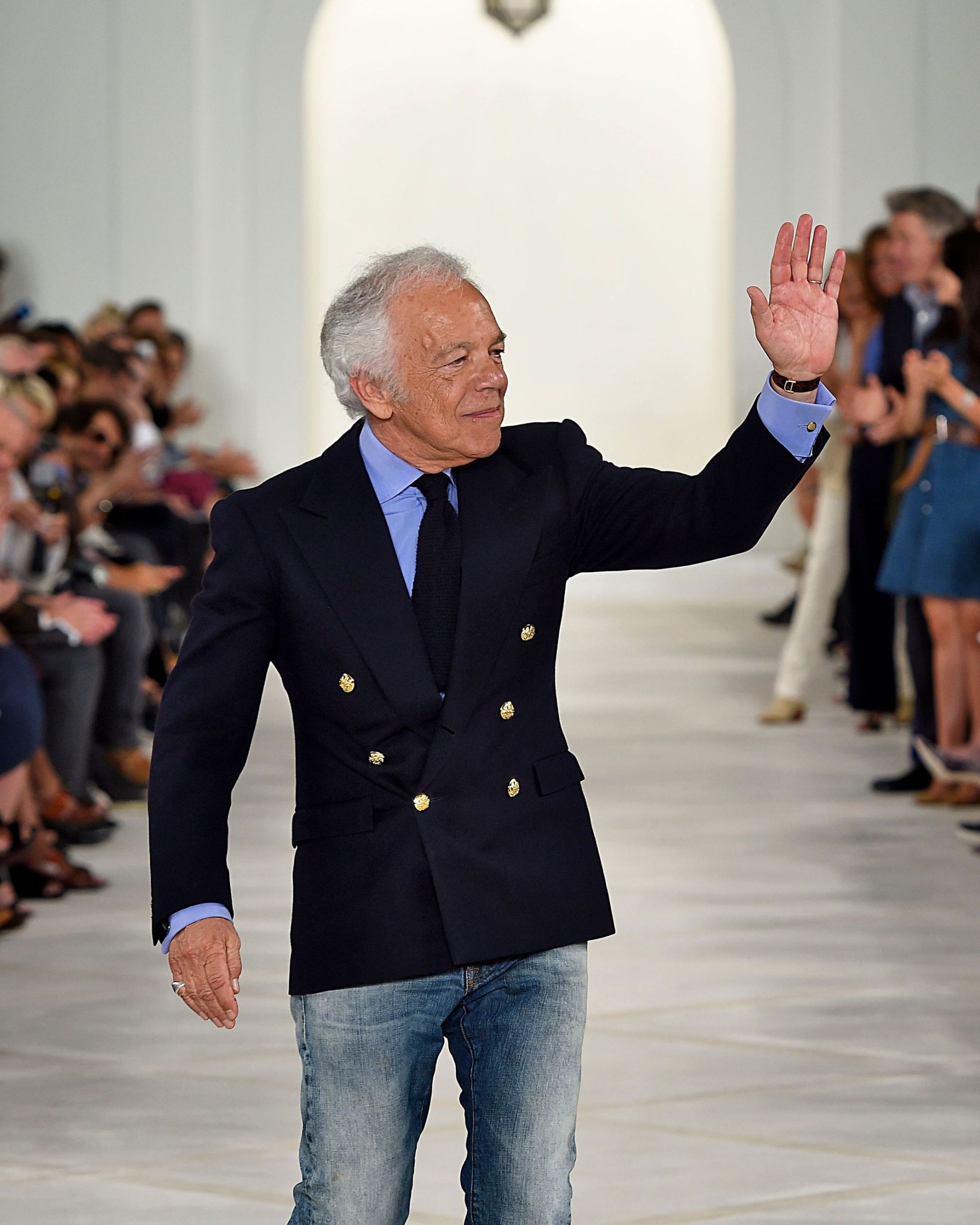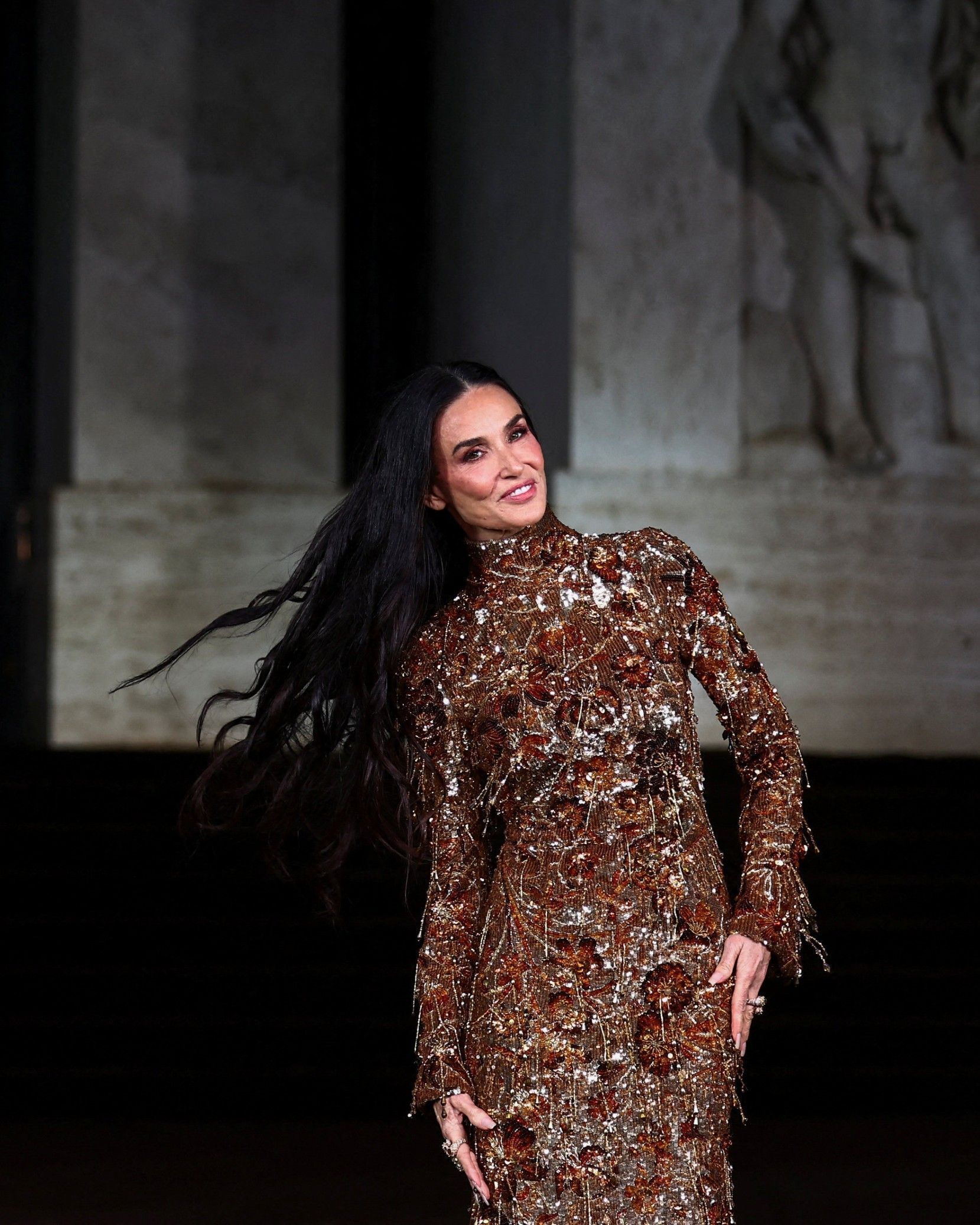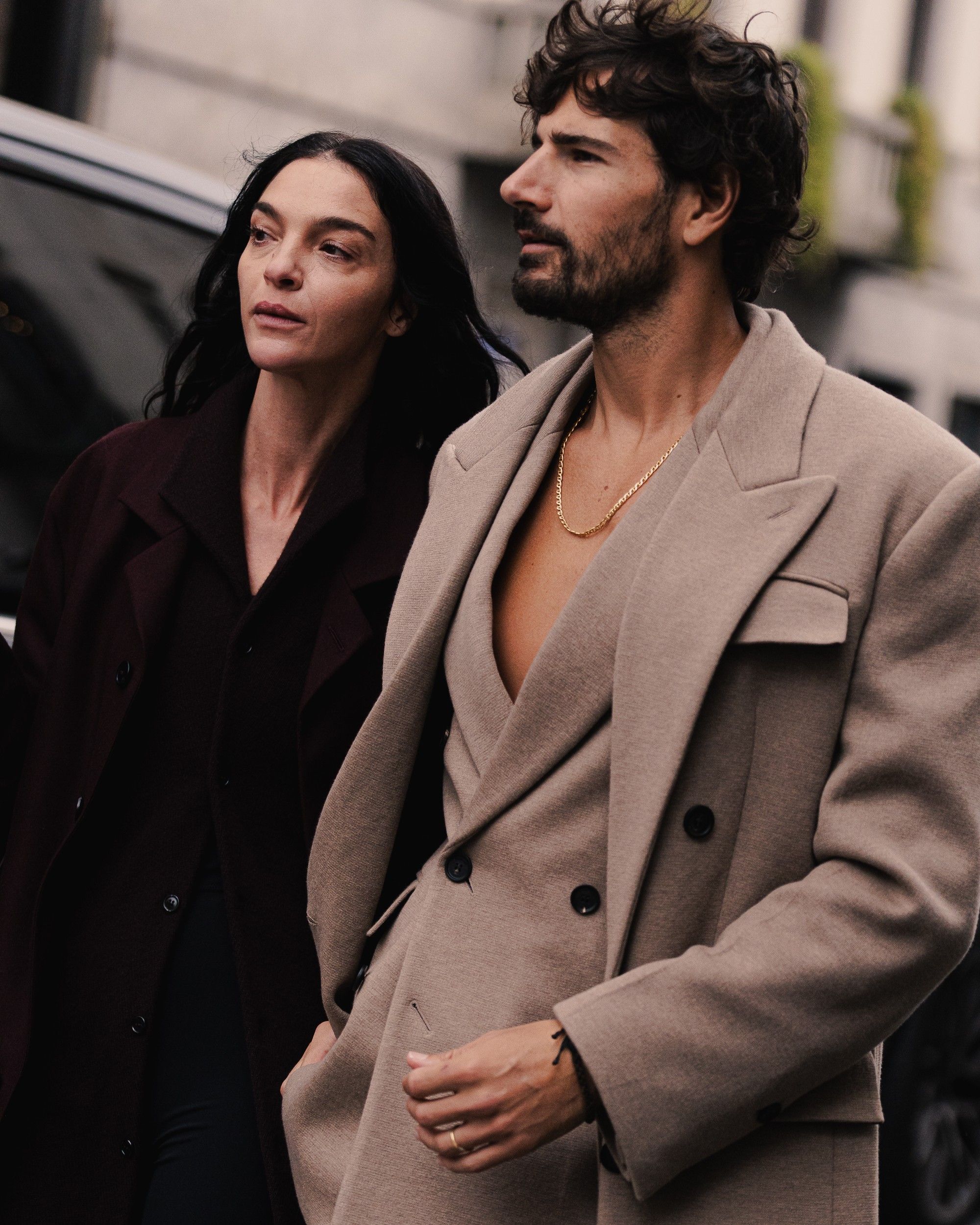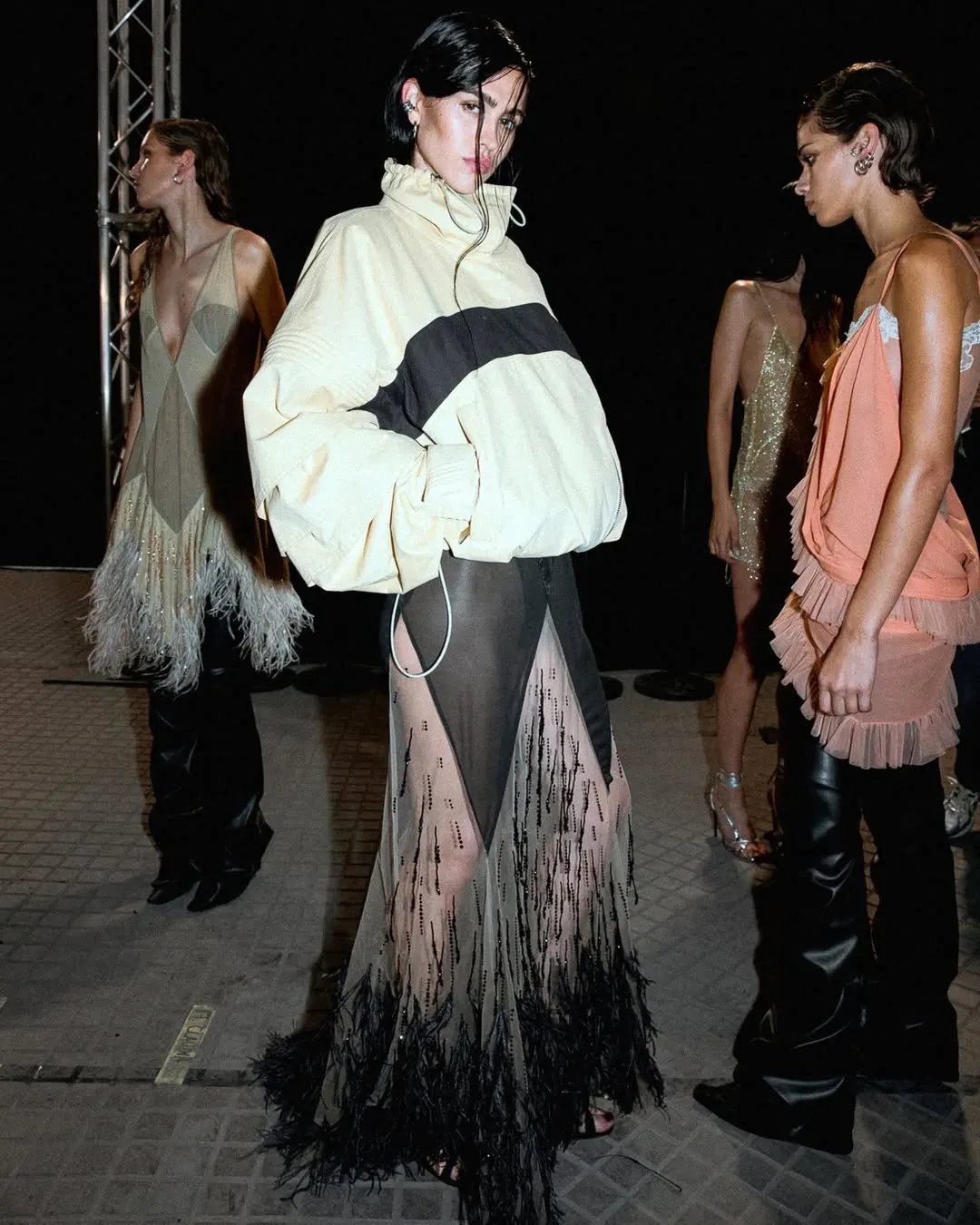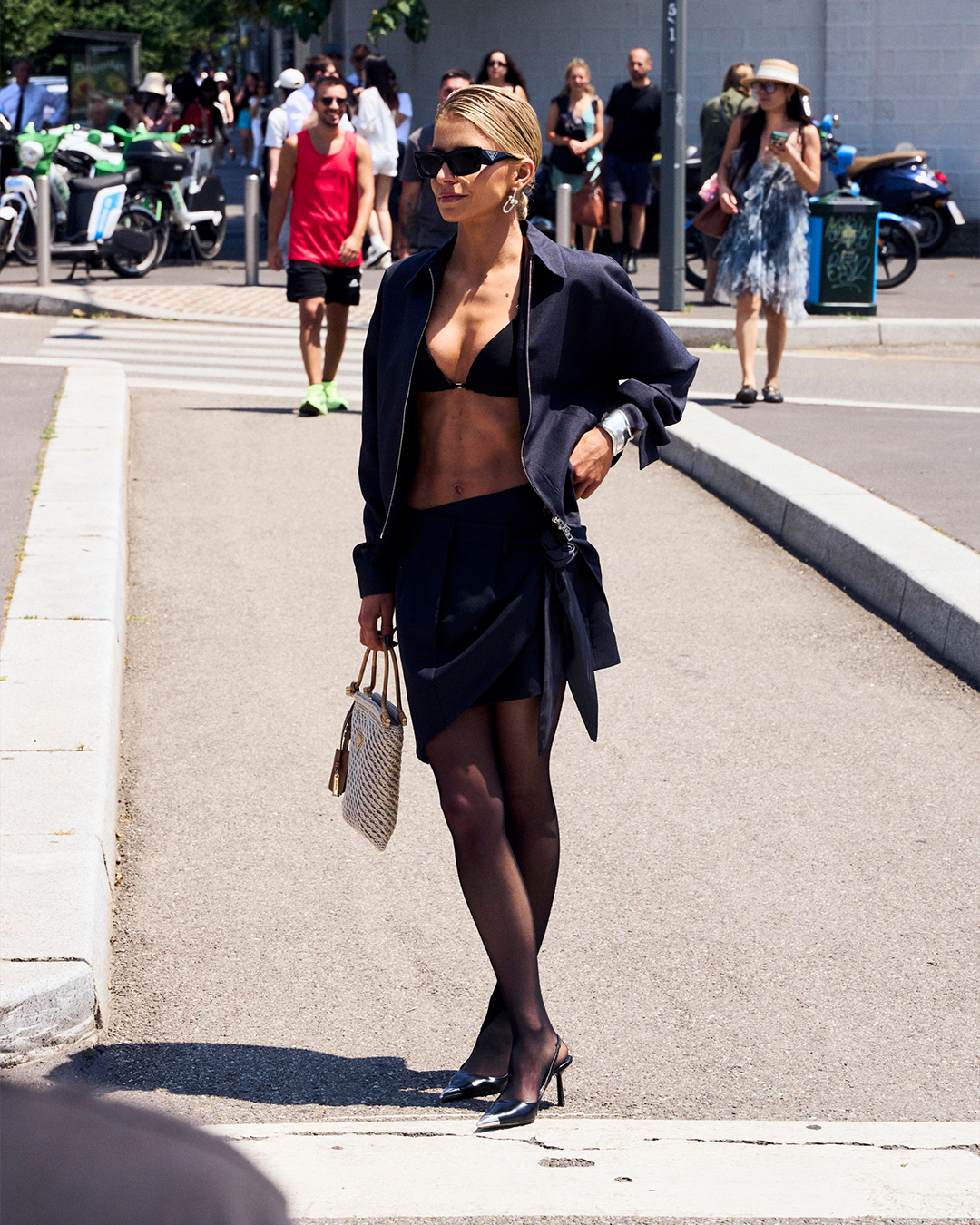
«Rooted in the territory, layered over time»: in the backstage at Ferrari's latest show Creative director Rocco Iannone tells us about the brand's SS23 collection
«Since I've been in Ferrari I've been embarking on a kind of journey», said Rocco Iannone before Ferrari's Milan show, the third since the brand expanded into fashion, and which was staged Sunday morning at Milan's Teatro Lirico. «Theater is the quintessential place where stories are told and enjoyed», explained Iannone, recounting how, for this collection, the humanistic component of the Ferrari brand, «rooted in the territory and layered over time», had equal if not greater weight than the structural and technological elements, the protagonists of the brand's first two shows. «What I am trying to do for Ferrari fashion is to create a narrative where each show adds a chapter. [...] It is a cultural journey within the various inspirations that such an important brand, so powerful and so multifaceted, is able to offer». In fact, compared to the first two outings, Ferrari's SS23 collection relied less on logomania and more on pure silhouettes and materials, limiting the references to the automotive world proper with the dual presence on the runway of the racing suits of Carlos Sainz and Charles Leclerc whose silhouettes were transformed into additional suits that immediately recall the world of Formula 1, which, especially after the success of the latest Netflix documentaries, Iannone calls «a media platform of tremendous power and charisma».
Proprio la Formula 1 rappresenta una interessante chiave di lettura della collezione, ispirata «by the emotional universe» of Ferrari, by the culture surrounding the Maranello brand and by «the dimension of the dream understood as achievement, the desire to express oneself, self-assertion». Precisely for this reason, the fashion show was opened and closed by a fashion film shot by Floria Sigismondi, a celebrated videomaker who, in her short film shot in Los Angeles starring Alton Mason and Taylor Hill, deliberately portrayed an abstract and imaginary dimension of the brand, made of colors and sensations, which immortalizes «that tension that Enzo Ferrari felt inside when, during World War II, the world collapsed around him building his engine in the workshop, undaunted» and that Iannone still feels flowing through all the people who work for the brand, from the CEOs down to the workers. The filmic medium, the Los Angeles setting, and the dream dimension then bring into the equation the symbolic element of Los Angeles, a city that harbors a double meaning for Iannone: on the one hand it is «A city that welcomes the cultural and visual mix of landscapes and situations» which dominates the collection thematically; on the other hand «it's the city that has made us dream the most, thanks to the film industry, and that has allowed Ferrari to become the icon it is. Because Ferrari is also an icon thanks to cinema, the most powerful medium that still makes us yearn and dream».
Precisely in homage to Los Angeles, the camouflage motif so dear to Iannone, which had previously been reinterpreted through remixed prints of the Ferrari Horse, is now replaced by a motif of palm leaves, the main connotation of the California landscape, as well as by the idea of light (Southern California's is one of the best in the world according to Iannone) that was translated in terms of the collection in a series of dresses that appeared on the finale to which the photos do not do justice: it was an incredibly bright fabric in which sequins were joined by crystal-covered bolts and minute metal parts of cars. «There is no tailoring, there is no sportswear, there is no label. It is a collection in which the wardrobe is perfectly contaminated and responds to today's look, to our way of approaching fashion-which is not a sectorial fashion, not manifested in occasions of use, but a fashion where everything is mixed», Iannone explains. In other looks in the collection, denim (one of the collection's four core material elements, in addition to cotton, leather, and silk) had been finished and polished by employing a sustainable ozone treatment that only one manufactory in all of Italy could provide, while some of the small leather goods were made from excess leather scraps left over from car seat processing.
The technological element, compared to previous seasons, is toned down both in accordance with the thematic evolution of the collection and Iannone's strict design philosophy that clarifies: «We cannot shy away from introducing technology but under two conditions: the first is that technology is not an abuse of the purpose of dress; the second is to act on sustainability with a radical approach». In short, a philosophy that, while considering the technological element as one of the distinctive parts of Ferrari's identity, does not want to turn that same heritage into an easy gimmick. In other words: «If technology undermines the portability and immediacy of the garment, it becomes a sterile exercise».
More than the others, this is a collection that looks to the future and aims to make Ferrari's fashion stand on its own two feet. After all, the operation is as promising as it is ambitious: given the brand's immense cultural capital, Ferrari fully represents the idea of cross-sector luxury. «What we are doing now is building different parallels to what the automotive universe is, making sure that we emancipate them, make them credible, and build them steadily brick by brick», Iannone concludes. «In the future, I hope that this building around the brand will come to the public in a precise way through an unambiguous lens, clear in terms of values and image».










































